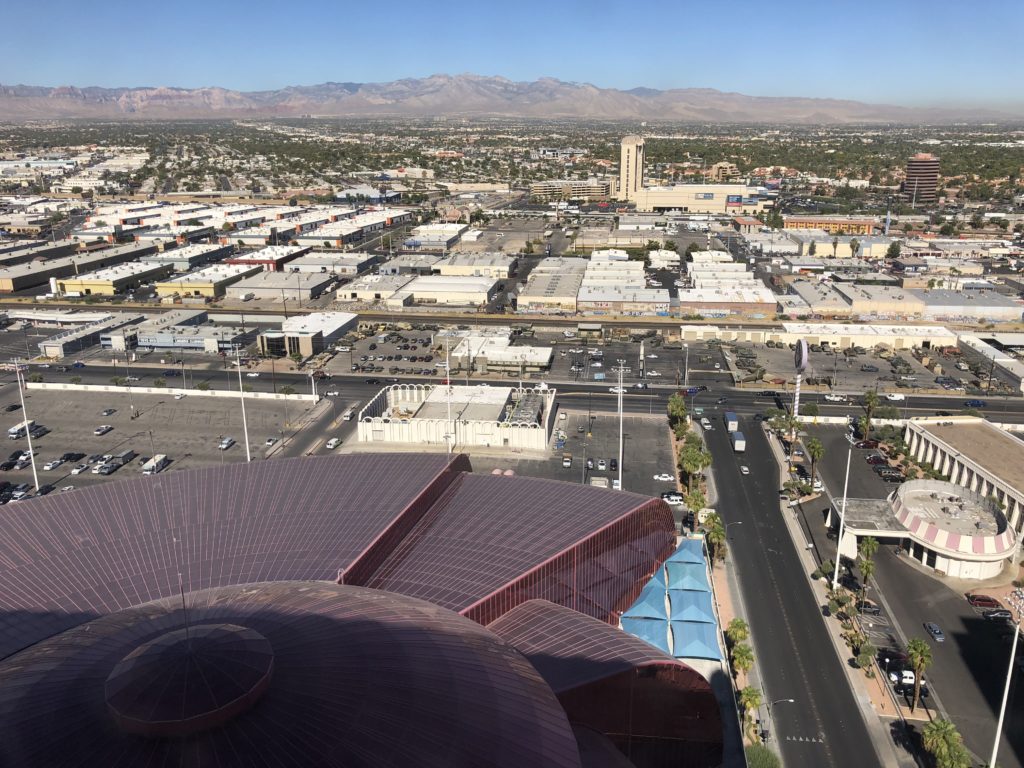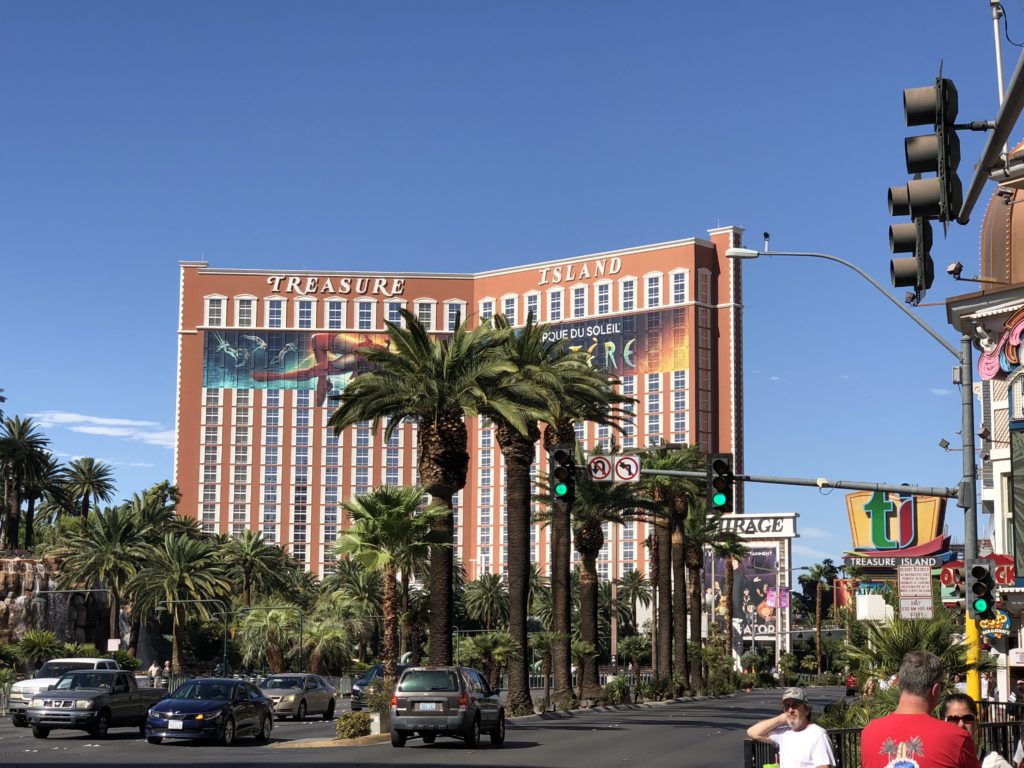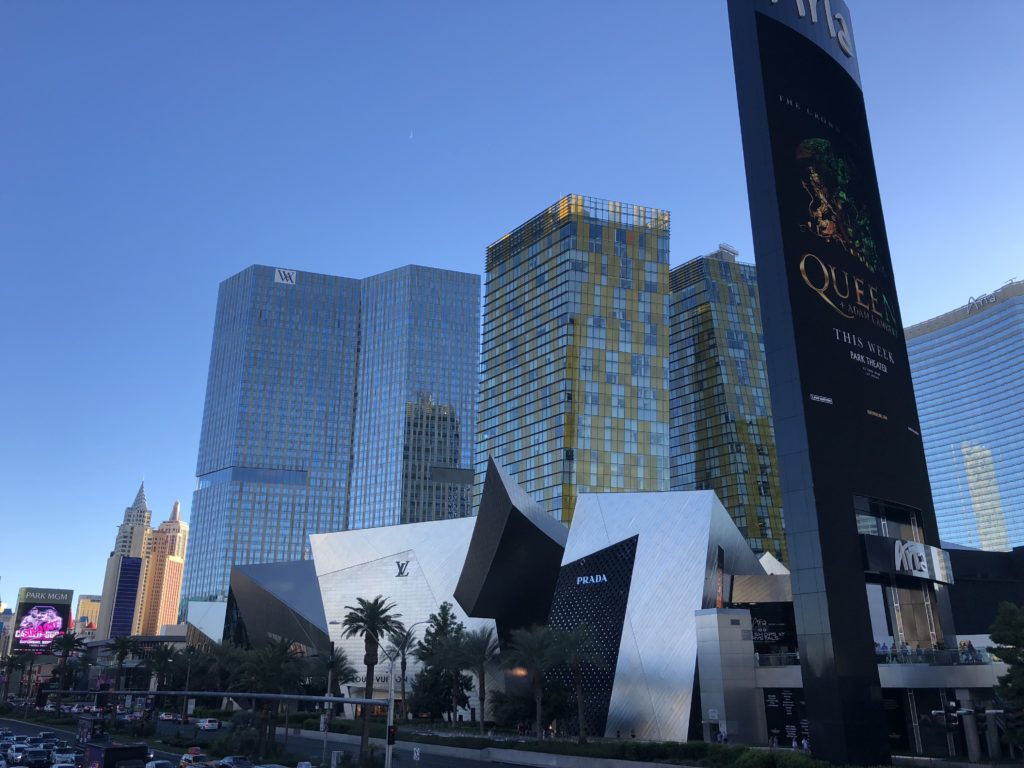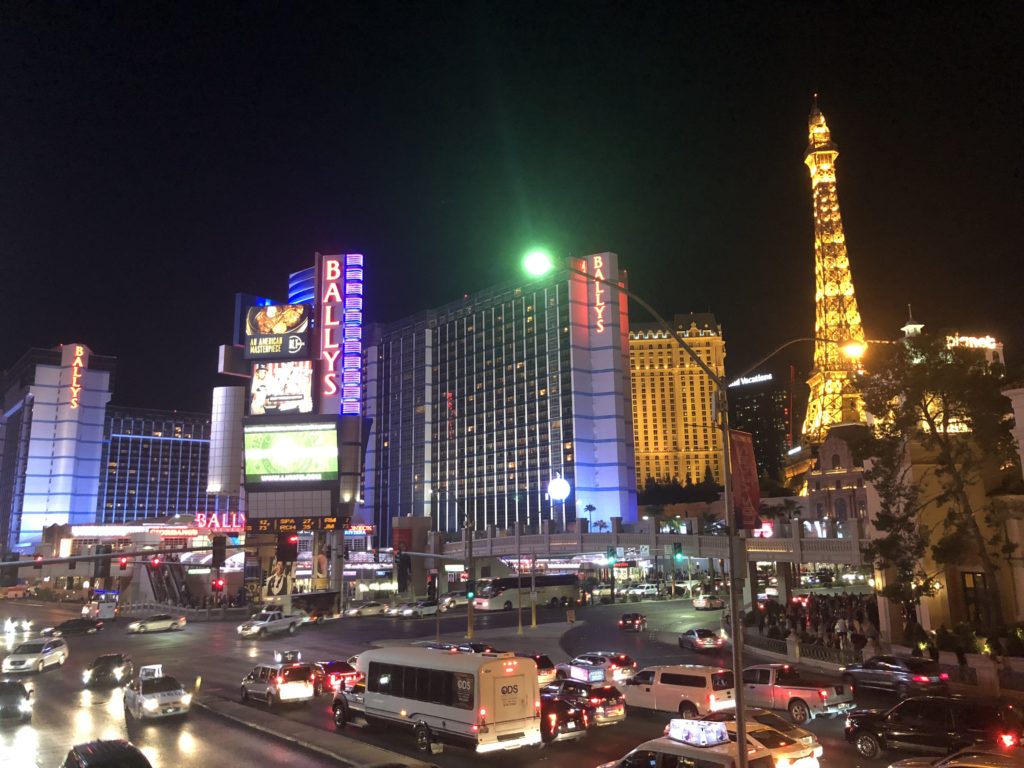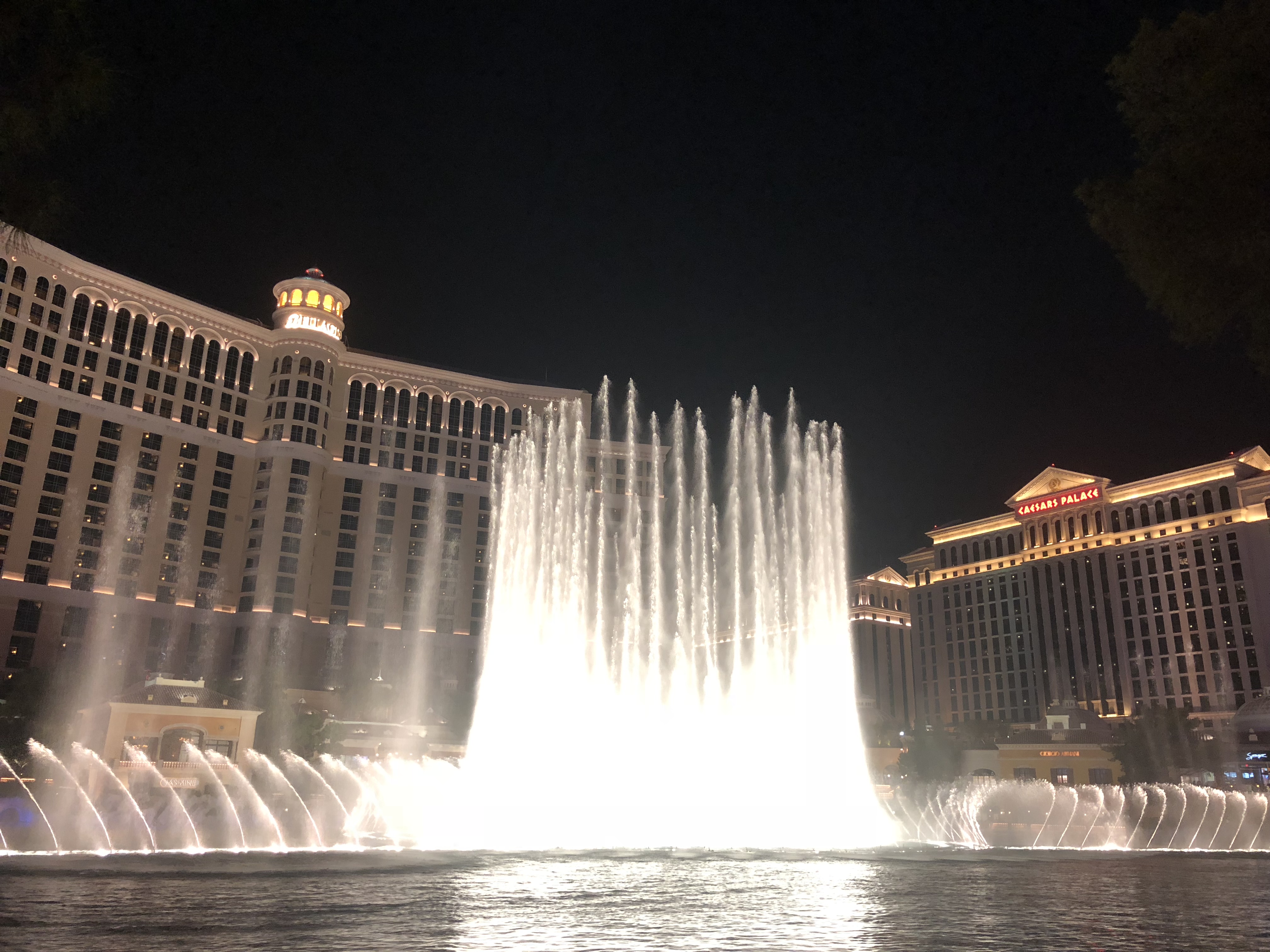We approached Las Vegas after sunset, a beacon of neon light drawing us in like moths to a flame. The history of the town’s rapid growth into entertainment mecca goes all the way back to the building of a huge dam during the despair of the Great Depression.
Hoover Dam, originally named Boulder Dam, was commissioned by the US government and built between 1931 and 1936. The purpose: to control flooding further down the Colorado River, provide irrigation water upstream (the dam creates the enormous Lake Mead), and produce hydroelectric power. This all took place 30 miles southeast of a small town called Las Vegas.


This was in the heart of the Great Depression when the unemployment rate hit 20%. Thousands of labourers came from far and wide with hopes of joining the dam’s construction crews. Vegas’s population went up fivefold! Sensing an opportunity, local business owners developed entertainment venues for this influx of mostly young males from across the country – showgirl theatres and illegal gambling establishments. Also sensing an opportunity, Nevada state legalized gambling at the local level in 1931 and started issuing casino licenses (and taking their cut of revenues). While the federal government made efforts to stop dam workers from venturing into Las Vegas, the completion of the dam ironically supplied Las Vegas with all the electricity it would need to become the glitzy neon-lit “fabulous Las Vegas”. The dam itself, and nearby Lake Mead, became major tourist attractions, further bolstering Las Vegas’s appeal.
There was always some element of organized crime in Vegas’s early days, but it joined the big leagues when Bugsy Siegel built the high-class “The Flamingo” in 1946 on the Las Vegas Strip. More followed, and by the mid-1950s, Vegas was studded with mob-affiliated casinos and hotels raking in a fortune. The big entertainers of the era – Sinatra, Dean Martin, Liberace, Bing Crosby, etc. – put on regular shows, and the city’s annual tourist numbers broke through eight million. Crackdowns on other gambling hotspots around the country, owing to their illegality, only aided Las Vegas’s rise.
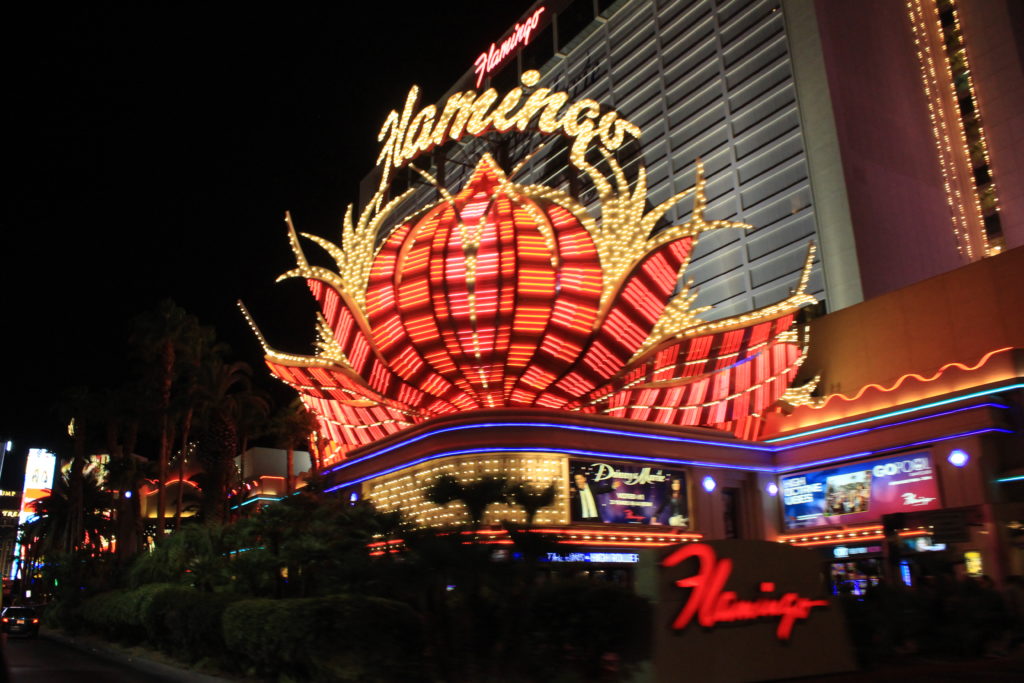
Las Vegas experienced rampant growth, with the population more than doubling each decade since the 1930s. But by the 1970s and 1980s, it began to show signs of fatigue. A competitor had emerged on the east coast when New Jersey legalised gambling in Atlantic City. As organised crime saw a general decline, Las Vegas made a major shift into the “megaresort era”. This began in earnest in 1989, when Steve Wynn developed “The Mirage”, a massive $630mn Polynesian-themed resort financed with money from Wall Street. Large corporations replaced organized crime. It was now all about scale, and the Mirage was the largest hotel in the world with a 1,500-seat arena.
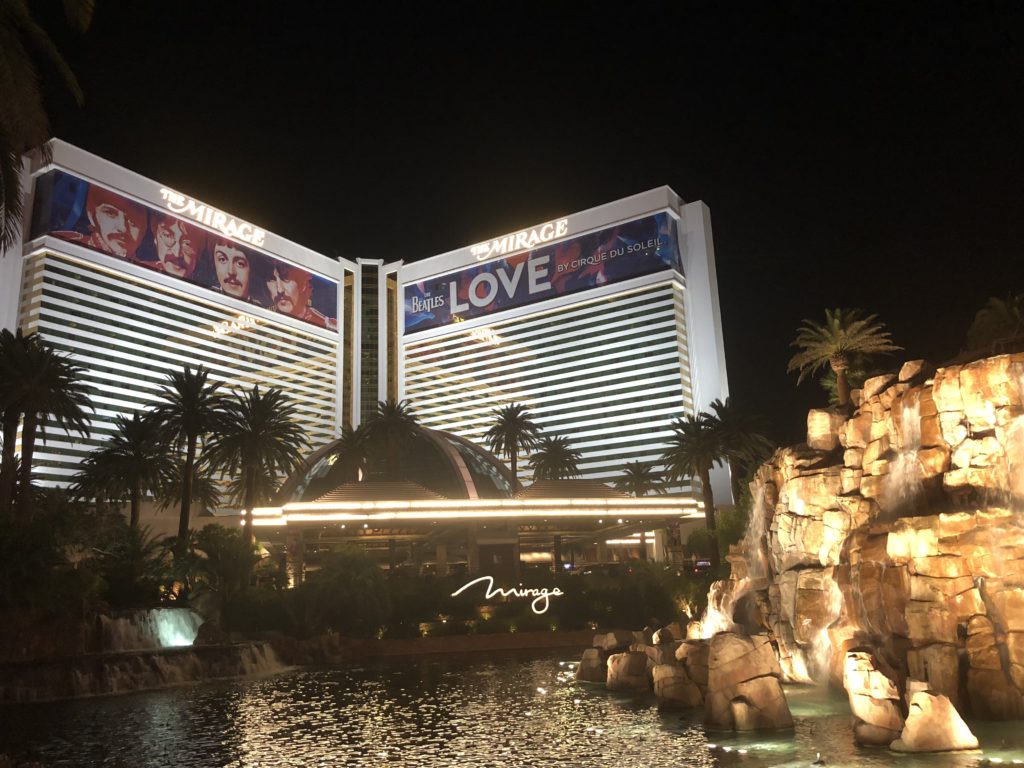
Vegas today, still in the megaresort era, finds itself offering entertainment in the broadest sense, the widest range, something for everyone – from gambling, to family-oriented shows, fine dining, huge convention centres, world-class night clubs, opulent shopping malls, … a man-made playground in the desert. And after many booms and busts, it finds itself dominated by four very large companies – MGM Resorts, Caesars Entertainment, Wynn Resorts, and Las Vegas Sands.
MGM Resorts’ properties include MGM Grand, Bellagio, The Mirage (it bought Wynn’s company for $4.4bn in 2000), Mandalay Bay, Circus Circus, Excalibur, Luxor, and New York-New York. We were staying in Circus Circus for a few nights. It had seen better days – it was built in 1968, and last renovated in the 1990s – but it was a convenient spot from which to explore the Strip.
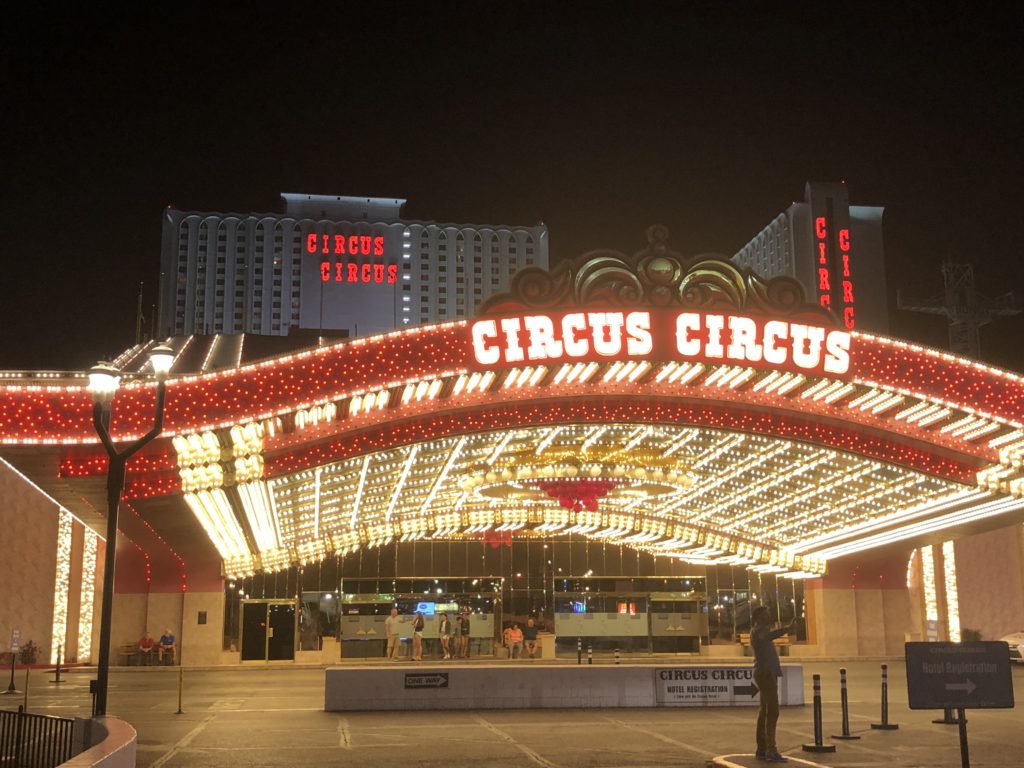
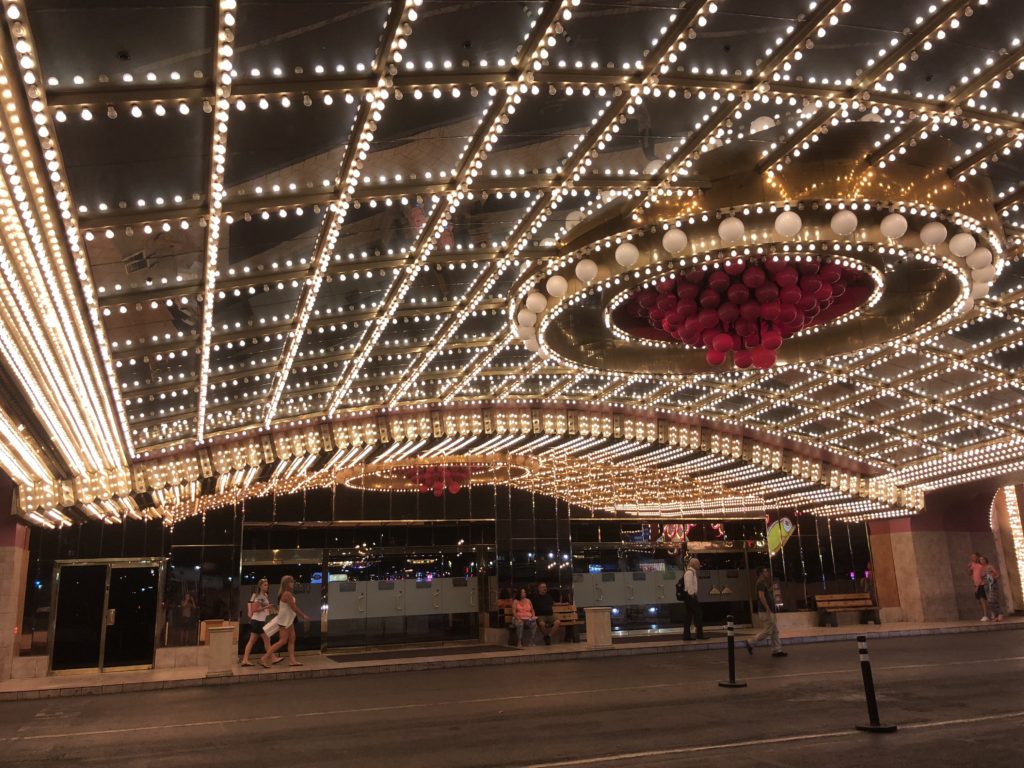
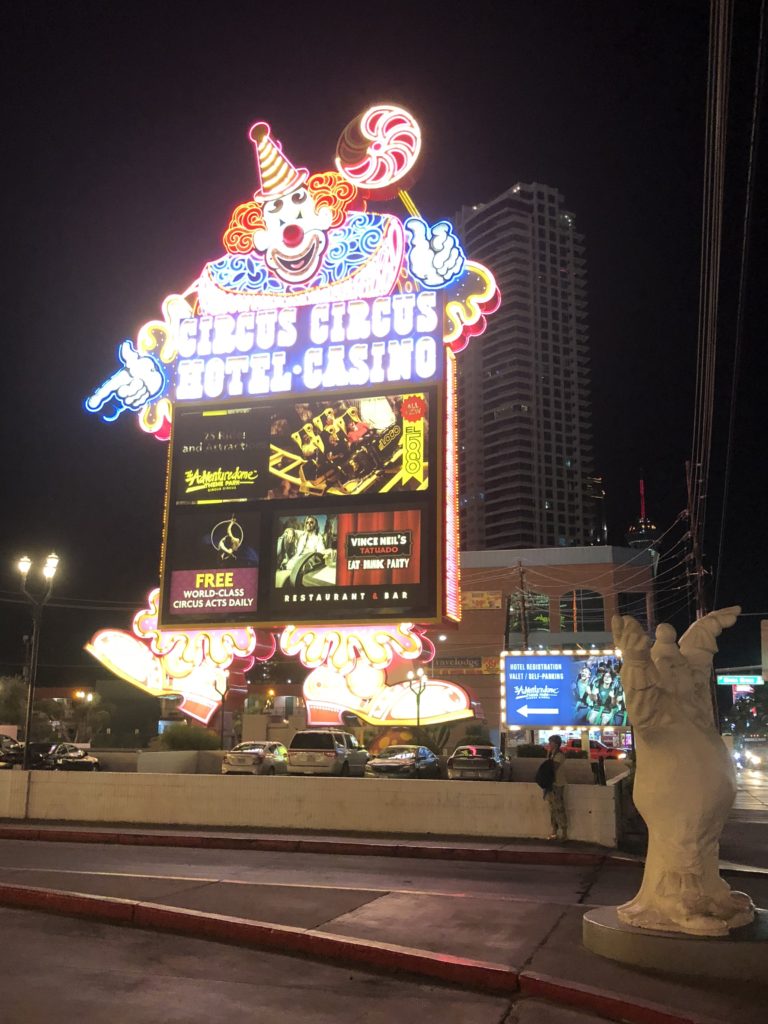
My favourite of the MGM properties that we visited was The Bellagio (1998). It’s themed after the Italian town of Bellagio on the shores of Lake Como and is home to a well known fountain display:
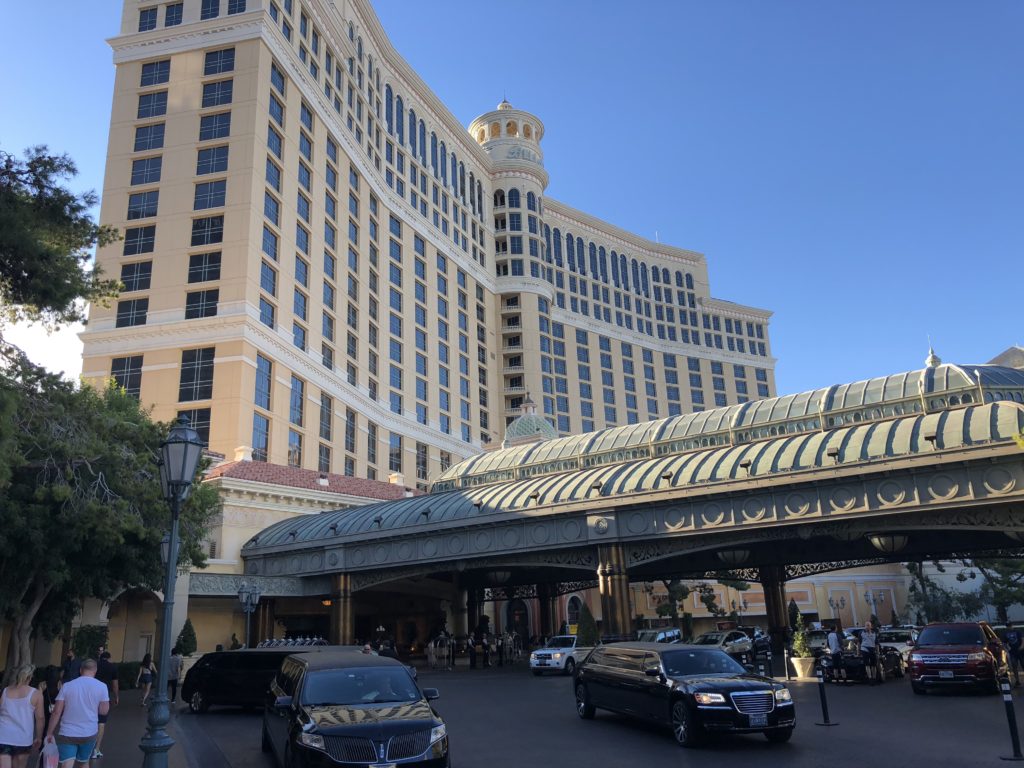
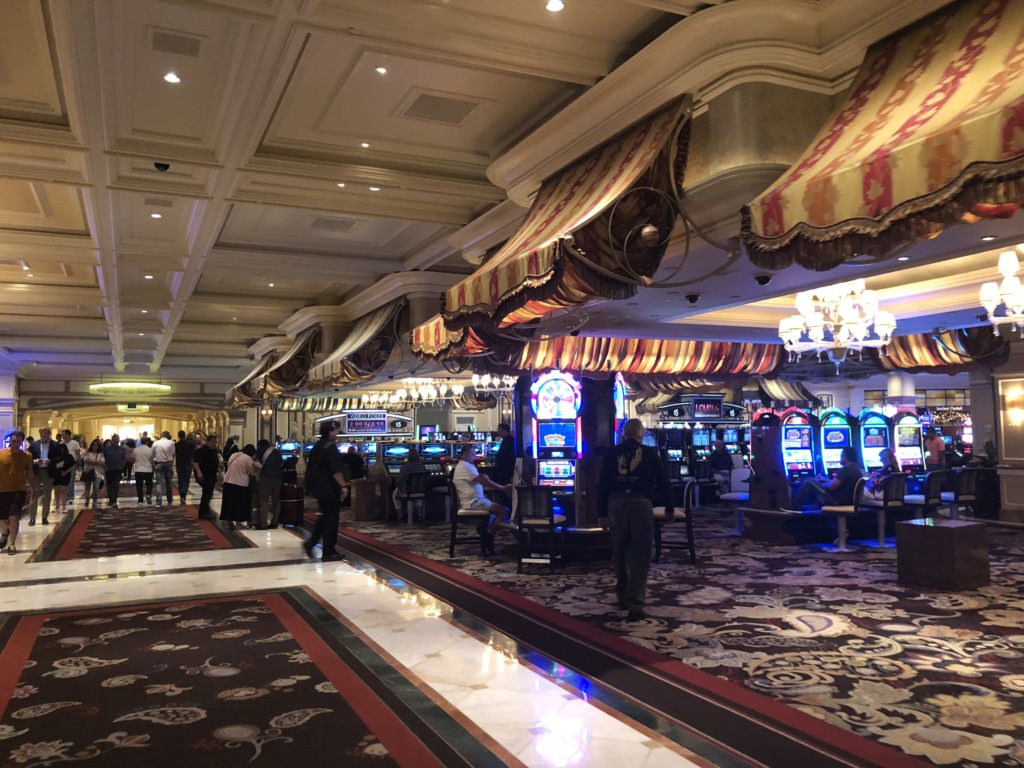
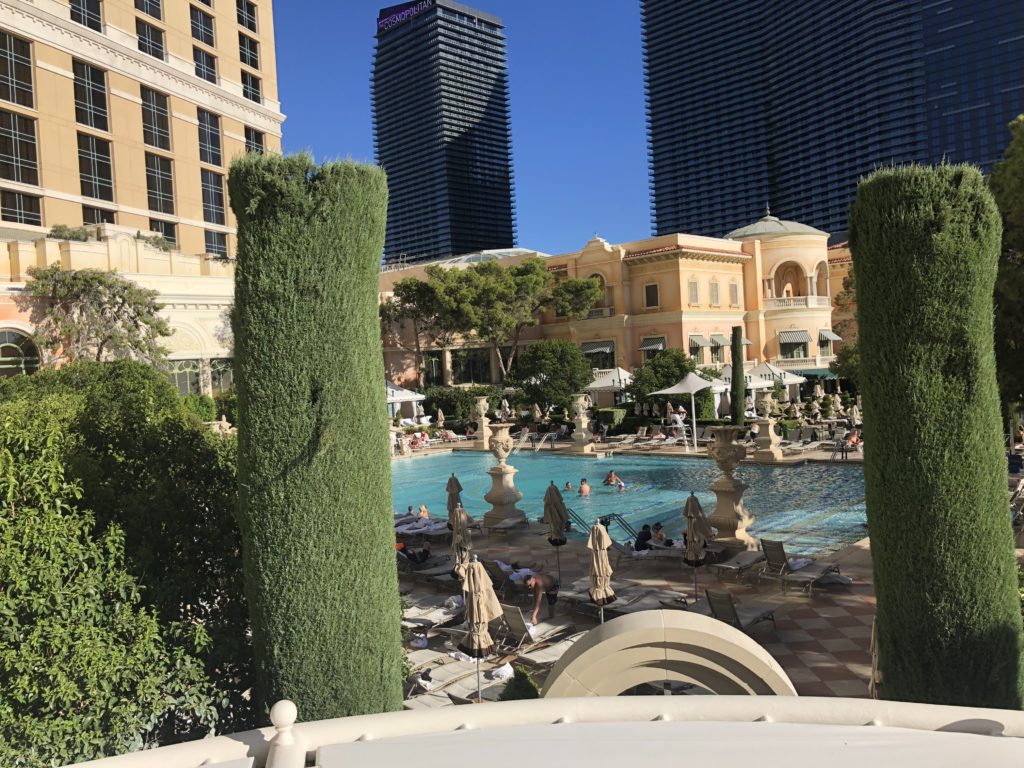
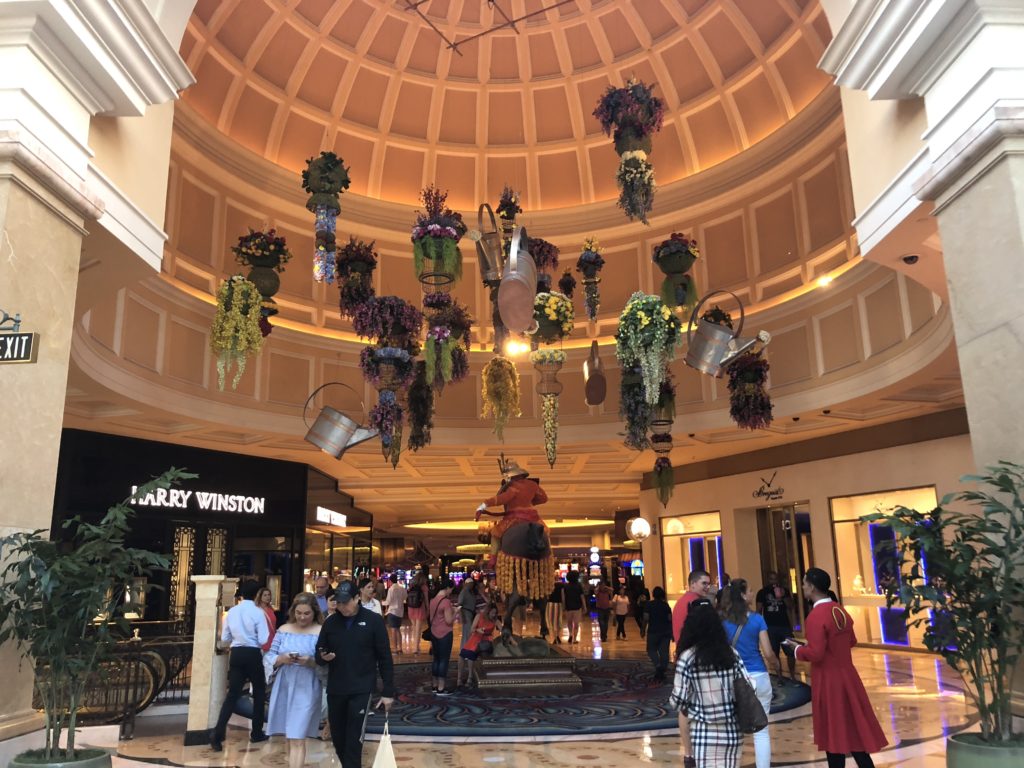
In the foyer of the Bellagio is a huge artwork by Dale Chihuly called Fiori di Como that includes over 2,000 hand-blown glass flowers. We had seen some of Chihuly’s work in Seattle a few months before.
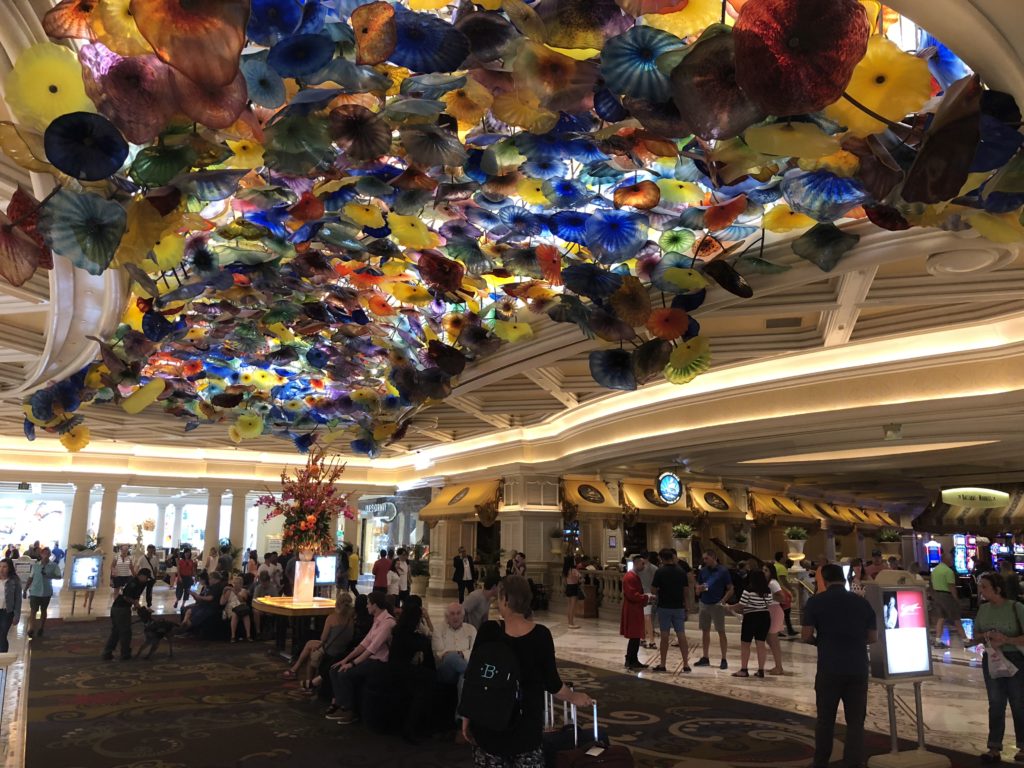
Our time in Las Vegas was essentially spent exploring the Strip, venturing into different resorts, wandering through atriums and malls, gambling a few dollars here and there (with limited luck), grabbing meals and drinks every now and then. It’s a fun place to do this – admire and explore all these massive resorts trying to outdo each other. Here is the New York-New York Hotel and Casino (1997):
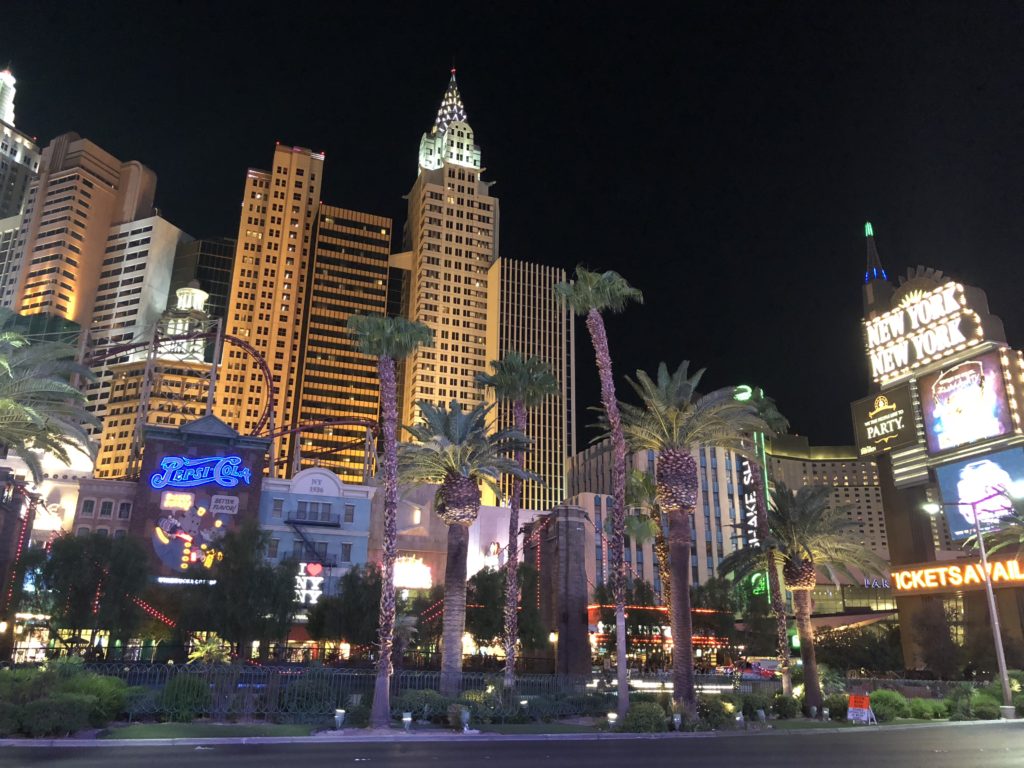
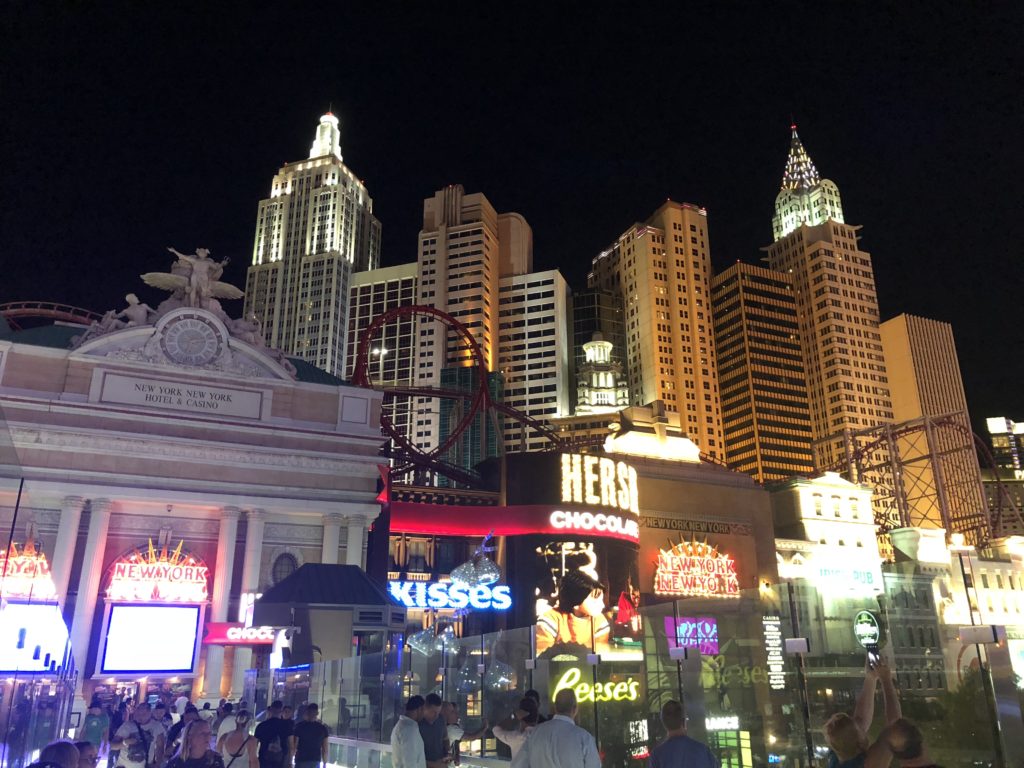
And the Medieval Europe-themed Excalibur Resort (1990) from afar:
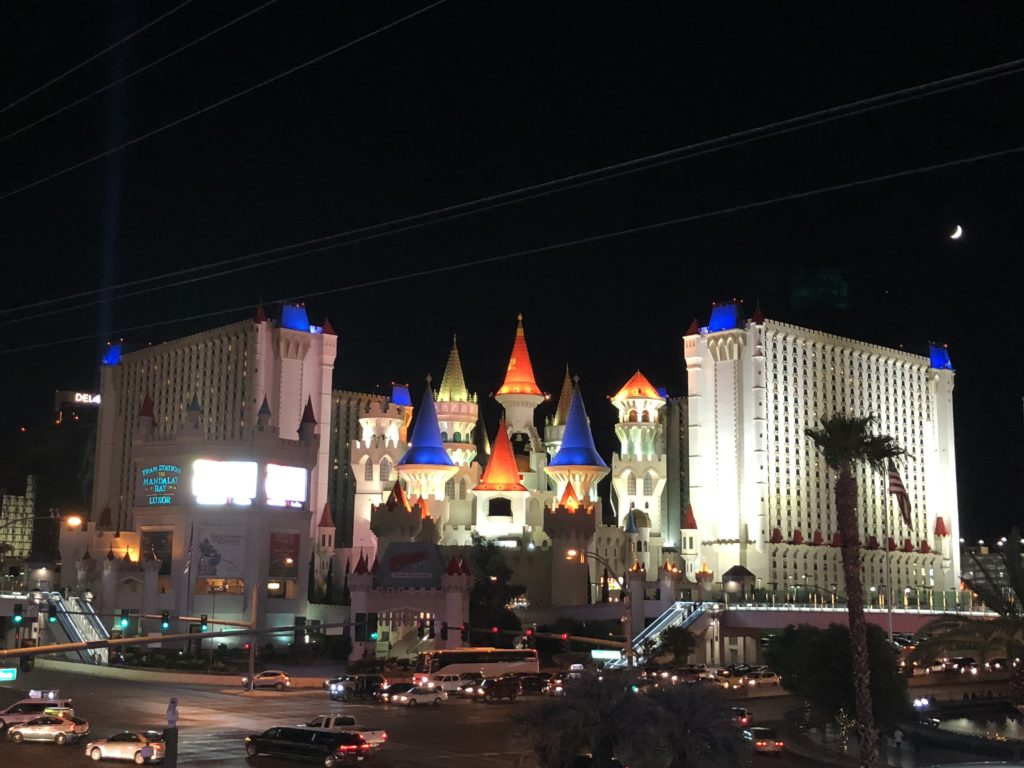
Caesars Entertainment operates Caesars Palace, Paris Las Vegas, Planet Hollywood, Bally’s, Harrah’s, Flamingo, The Cromwell, The Linq, and others. Here are a few pictures of Caesars Palace, probably the most famous of the Strip’s properties:
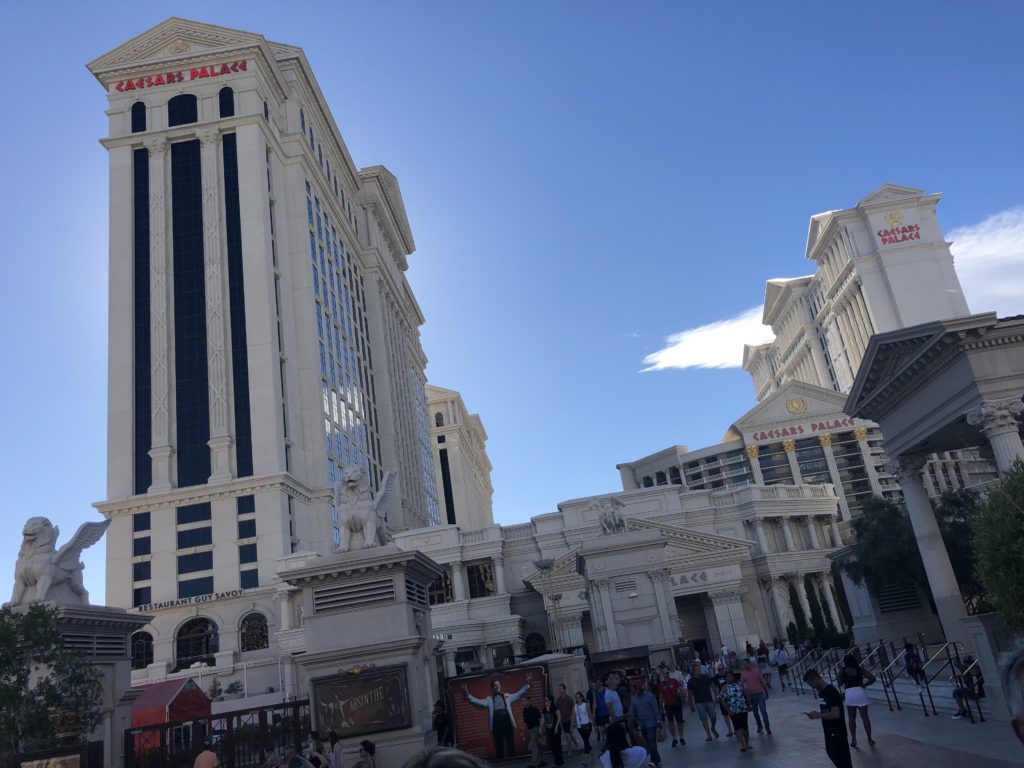
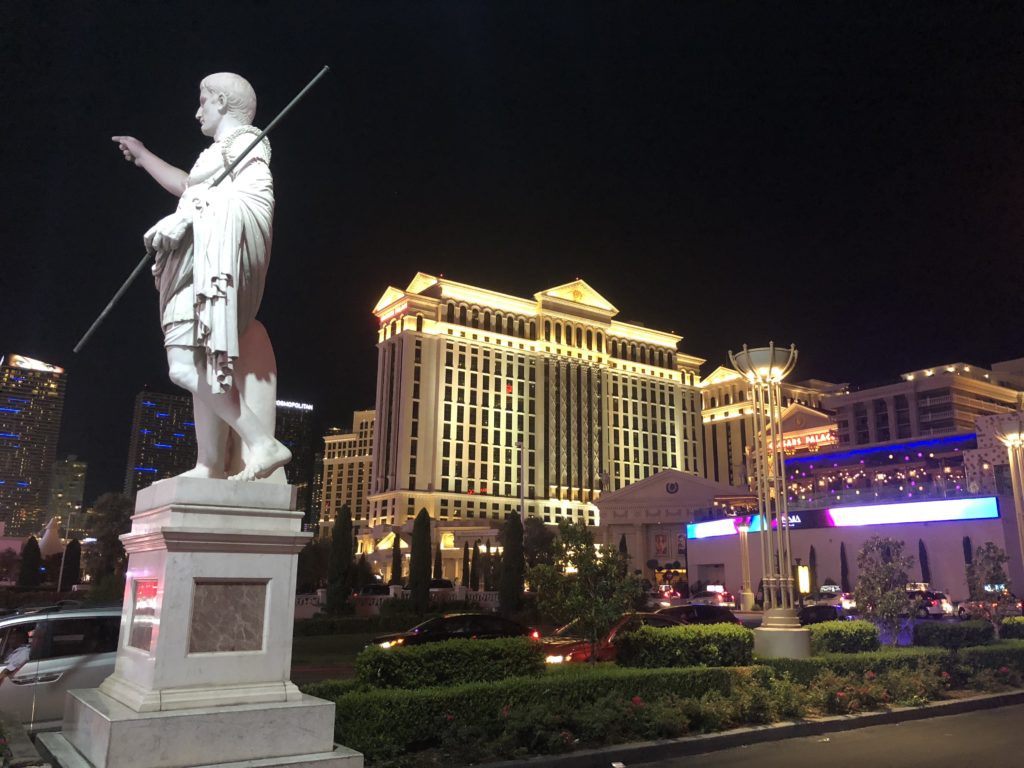
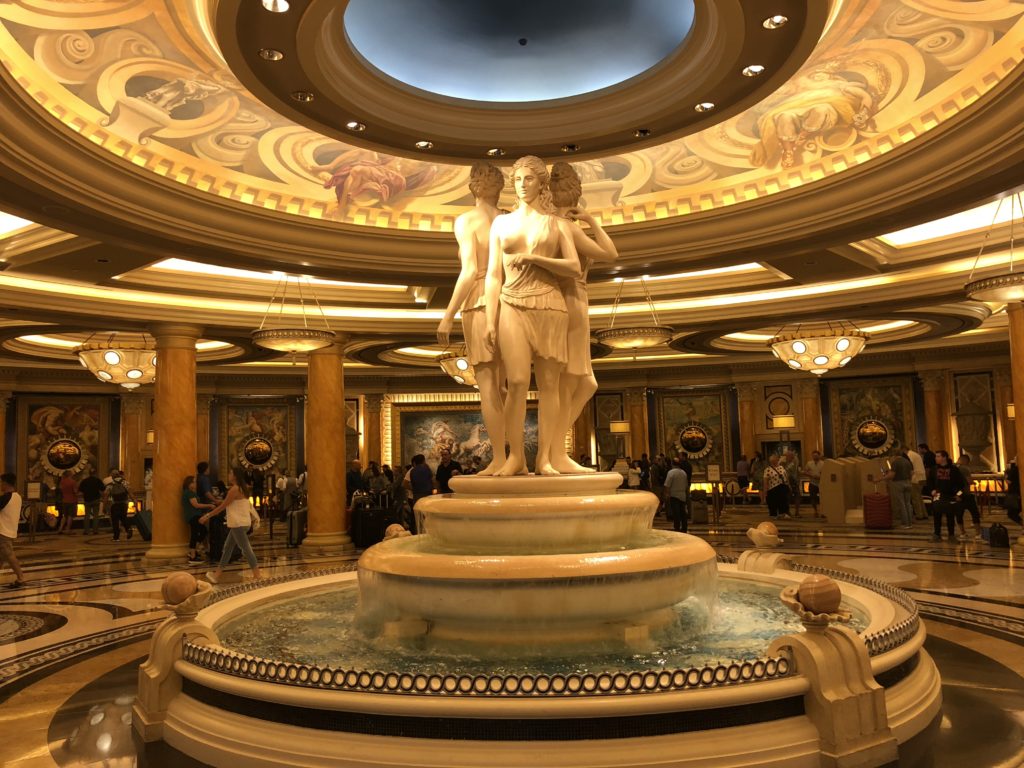
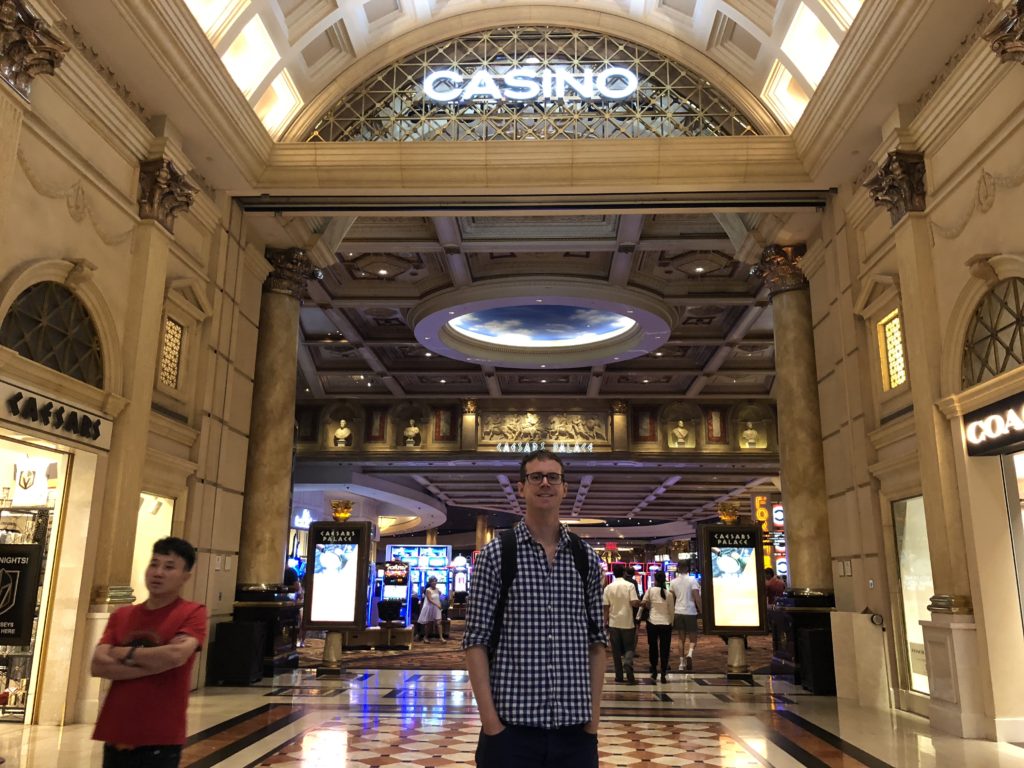
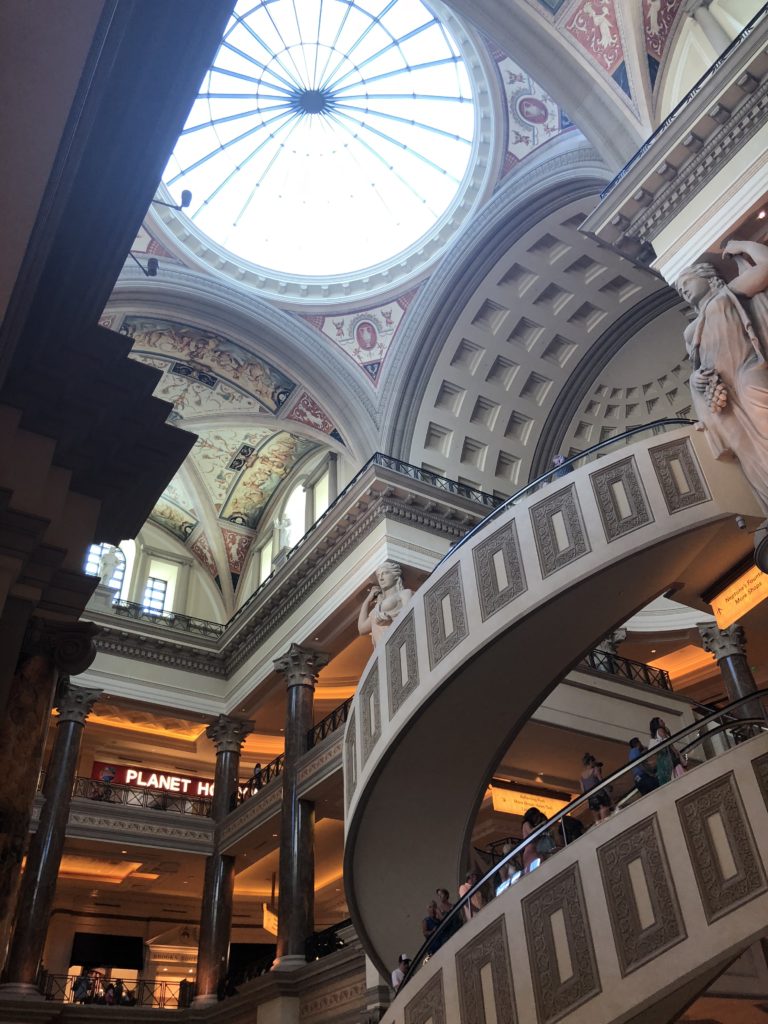
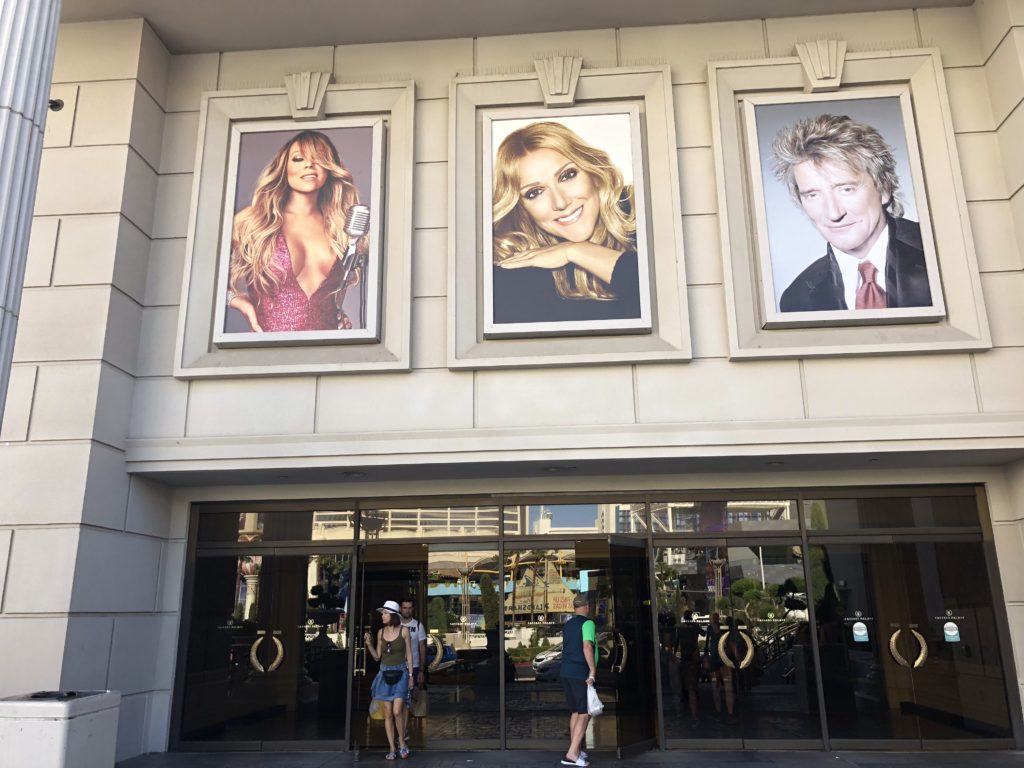
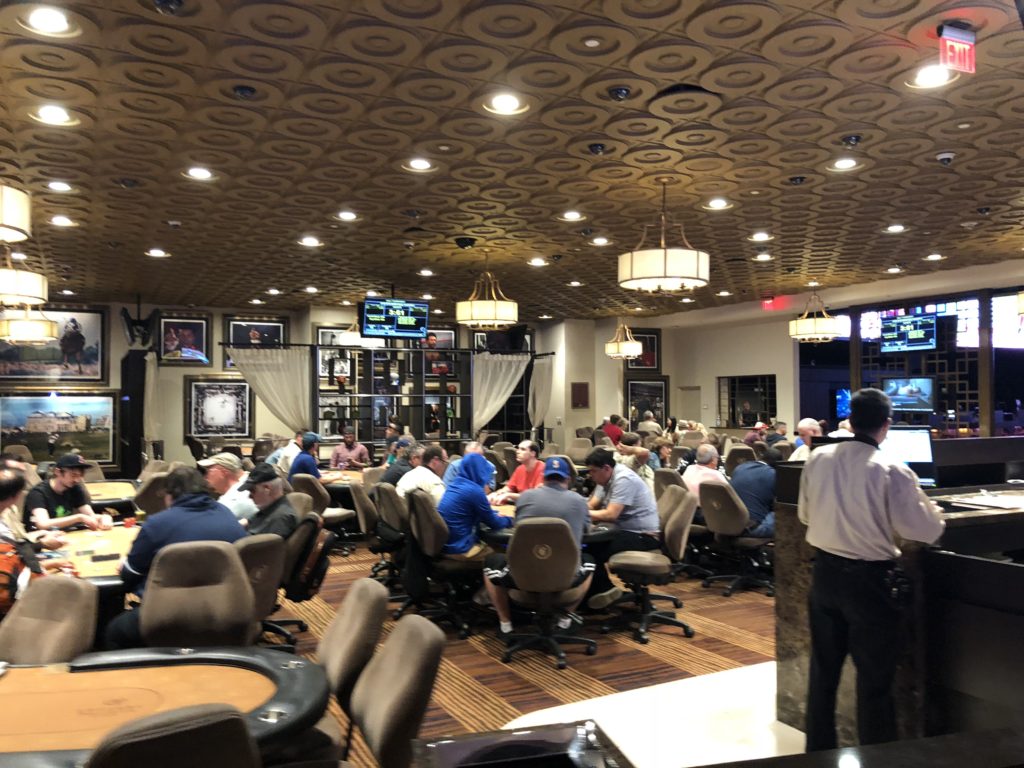
The celebrity chef Gordon Ramsay seemed everywhere – Gordon Ramsay Steak (Paris), Gordon Ramsay Burgers (Planet Hollywood), and of course Hell’s Kitchen:

Outside Planet Hollywood, these two entertainers passed Ella their phone and asked her to take a photo of them, and then proceeded to pose for a good five minutes while passing tourists all whipped out their phones and followed suit. Quite the sneaky ploy…
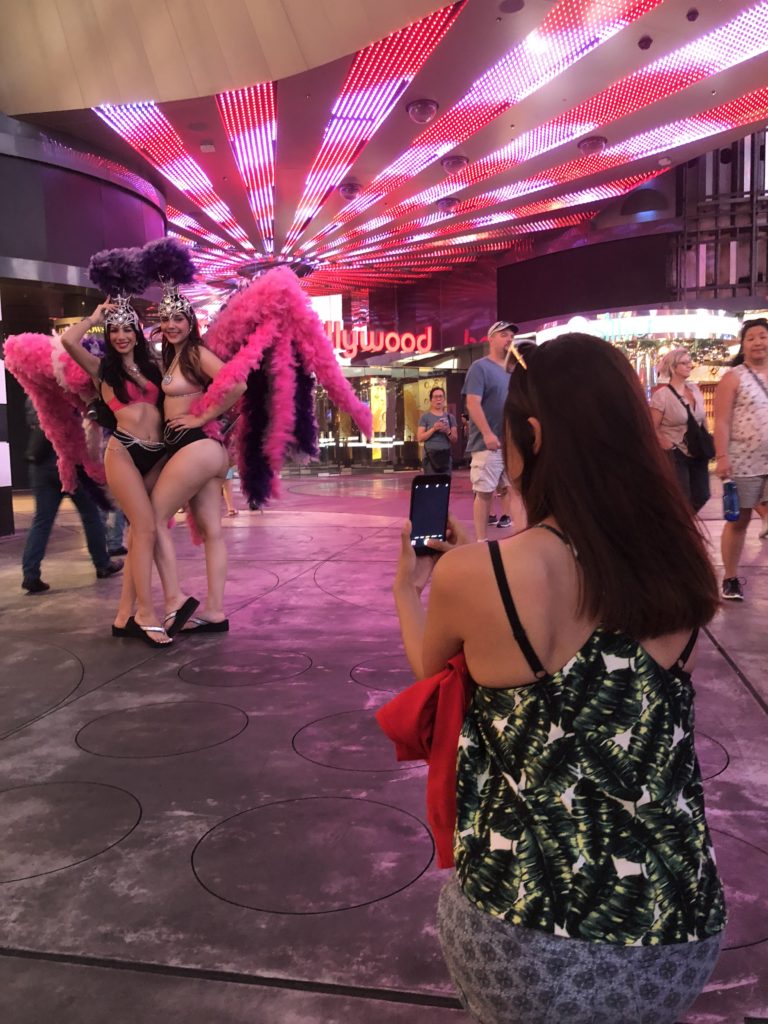
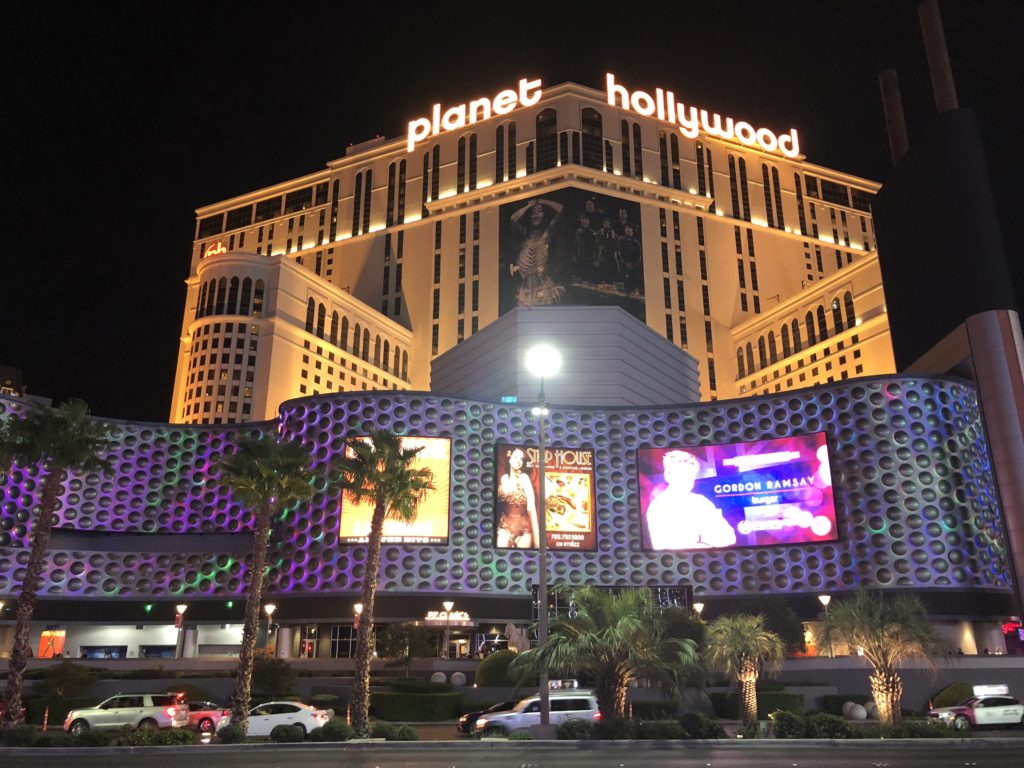
Paris Las Vegas (1999) is one of the more iconic Vegas resorts. It houses a half scale replica of the Eiffel Tower (165 metres tall), with a number of the tower’s legs emerging from within the resort’s gaming floor. The original plans had a full scale replica, but it would have interfered with a nearby airport. Amazing. There’s also a replica of the Arc de Triomphe, a very large theatre, … it’s impressive.
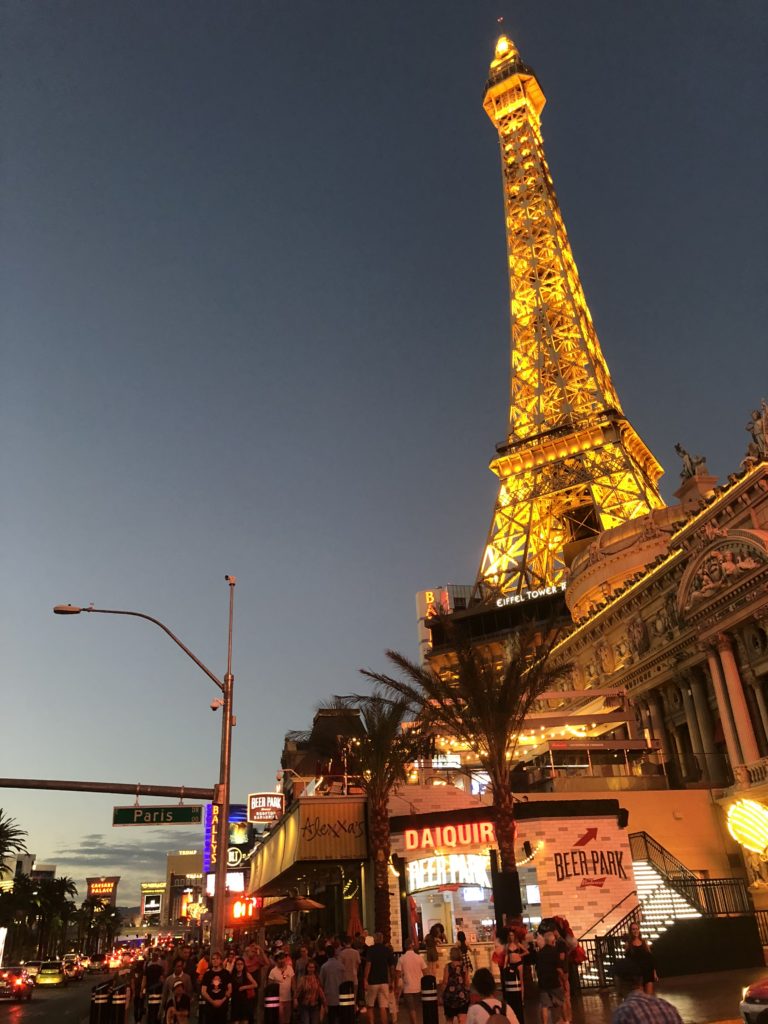
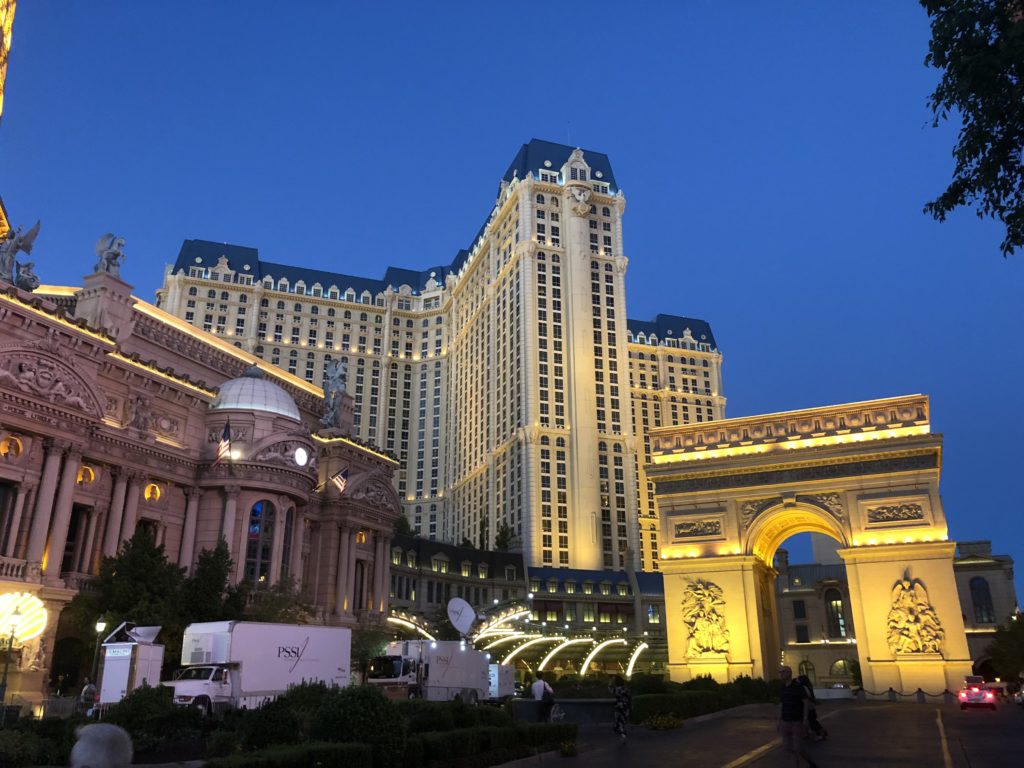
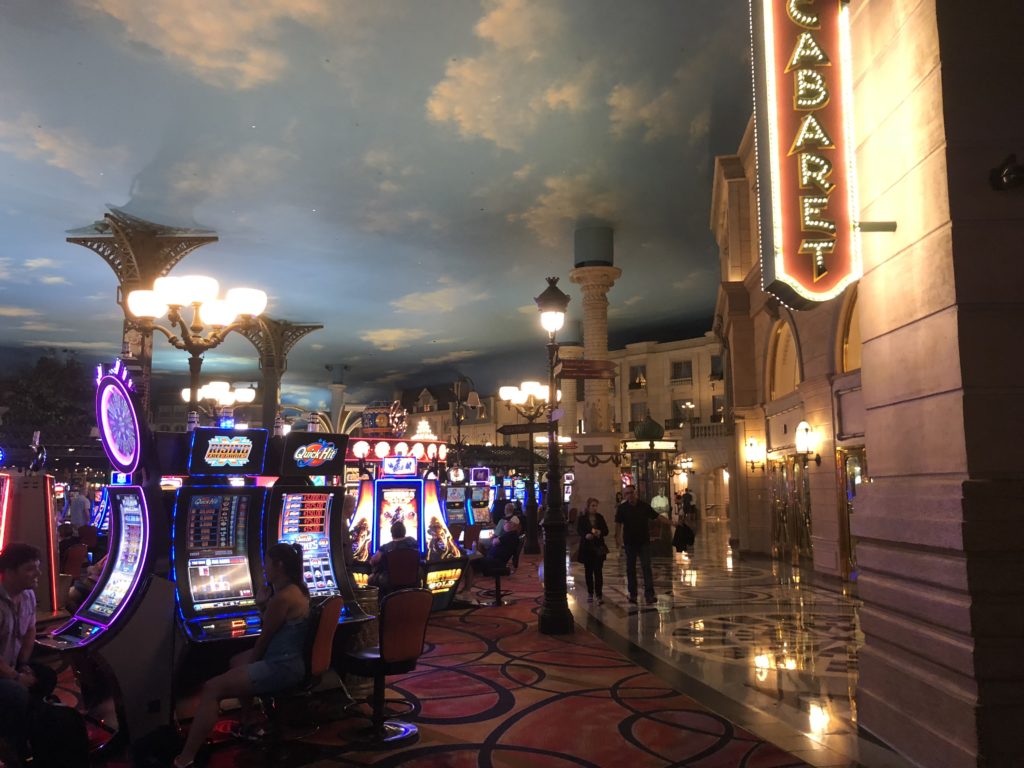
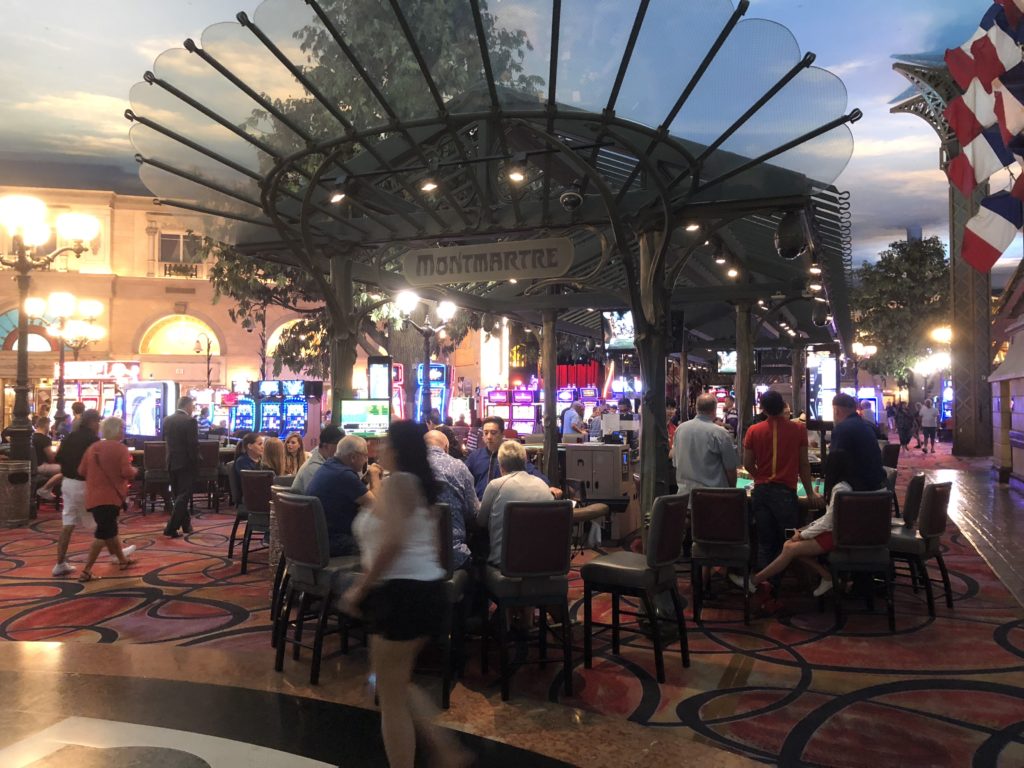
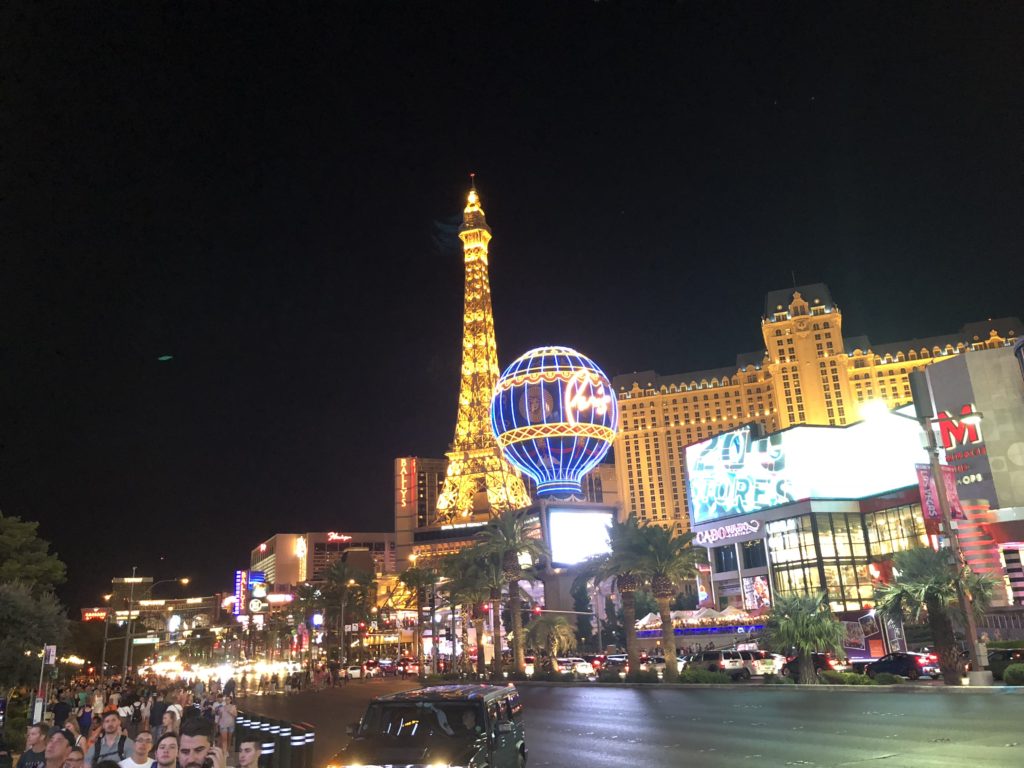
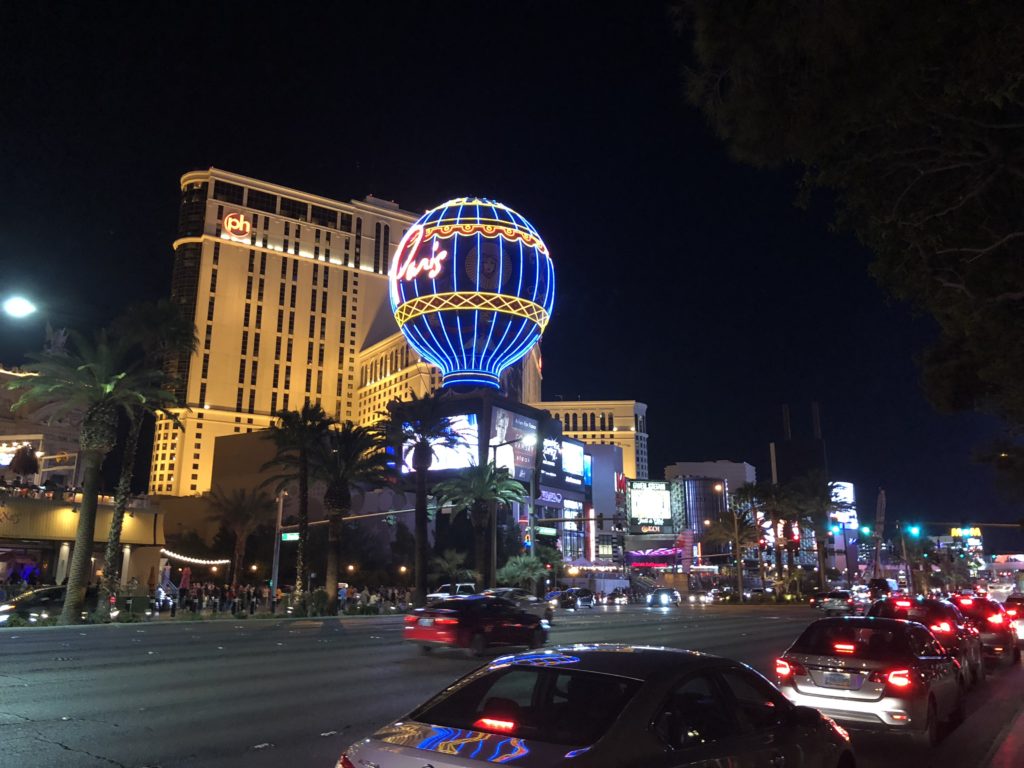
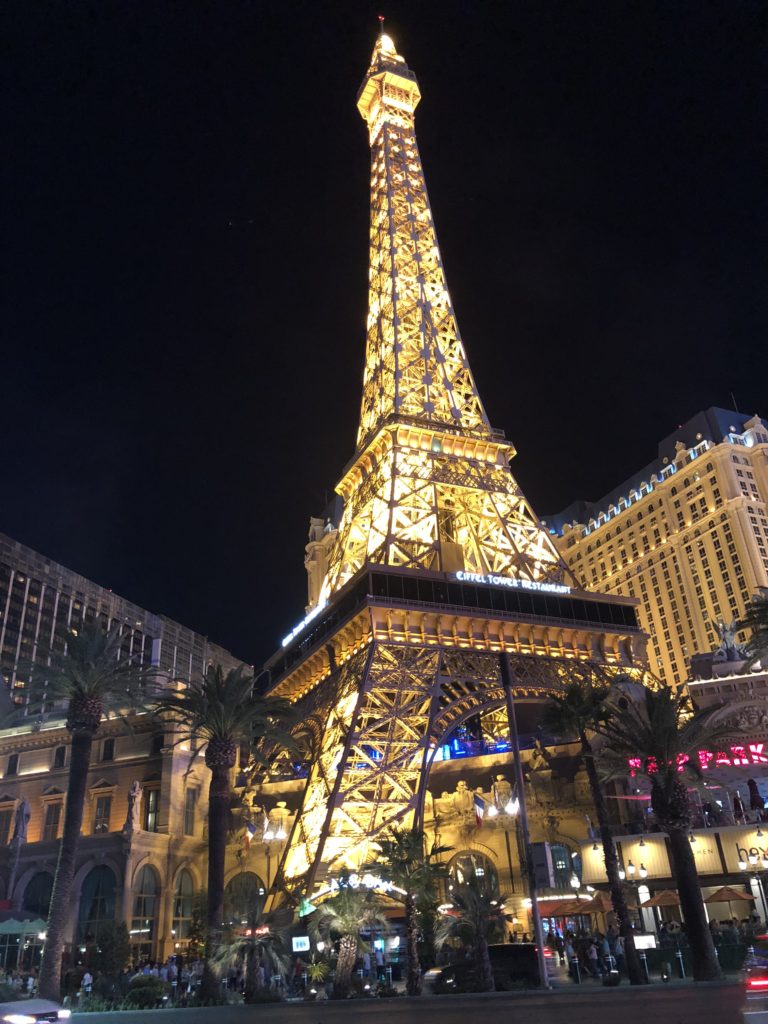
After selling his company to MGM in 2000, Steve Wynn made a swift comeback and founded Wynn Resorts in 2002. It quickly built the “Wynn” (not short of self confidence; 2005; 45-stories) and adjacent “Encore” (2008) resorts on the strip. Both are beautiful – all about luxury and opulence, beautifully designed and decorated. It’s a place designed to impress. In my view, the best of the bunch.
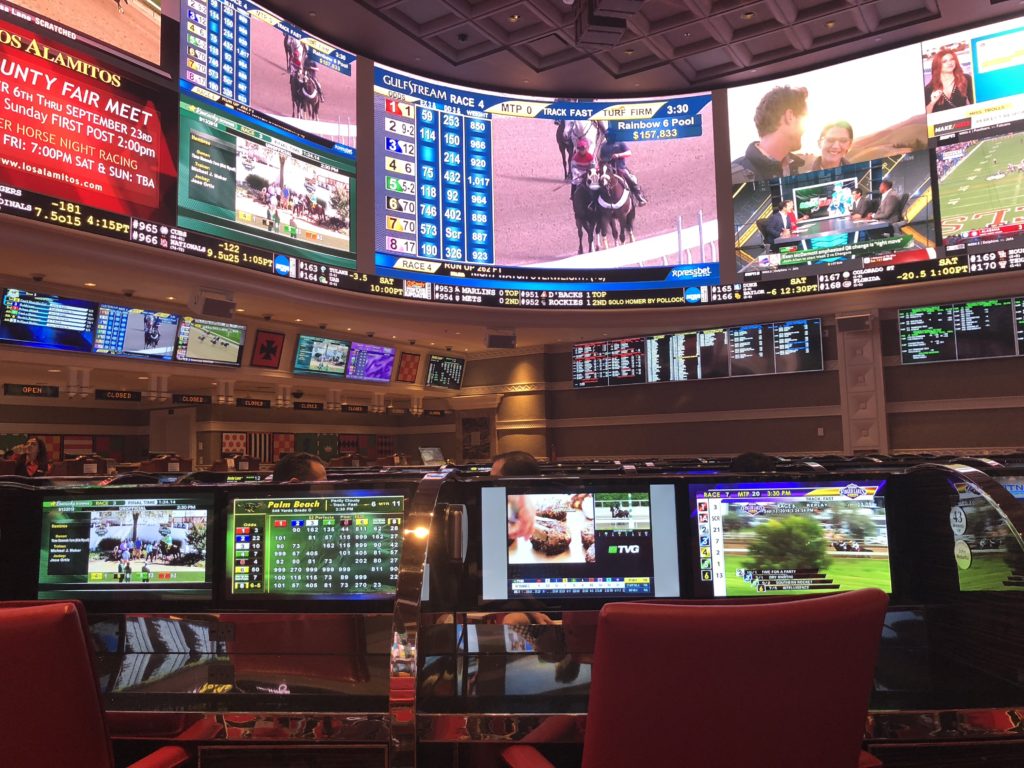
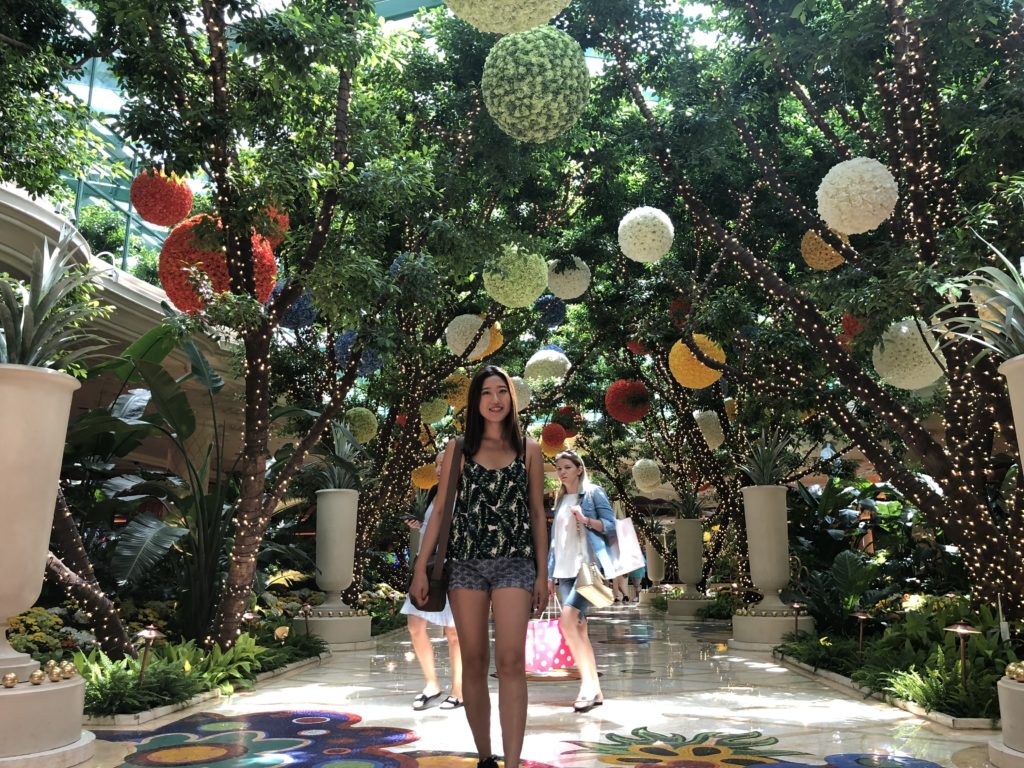
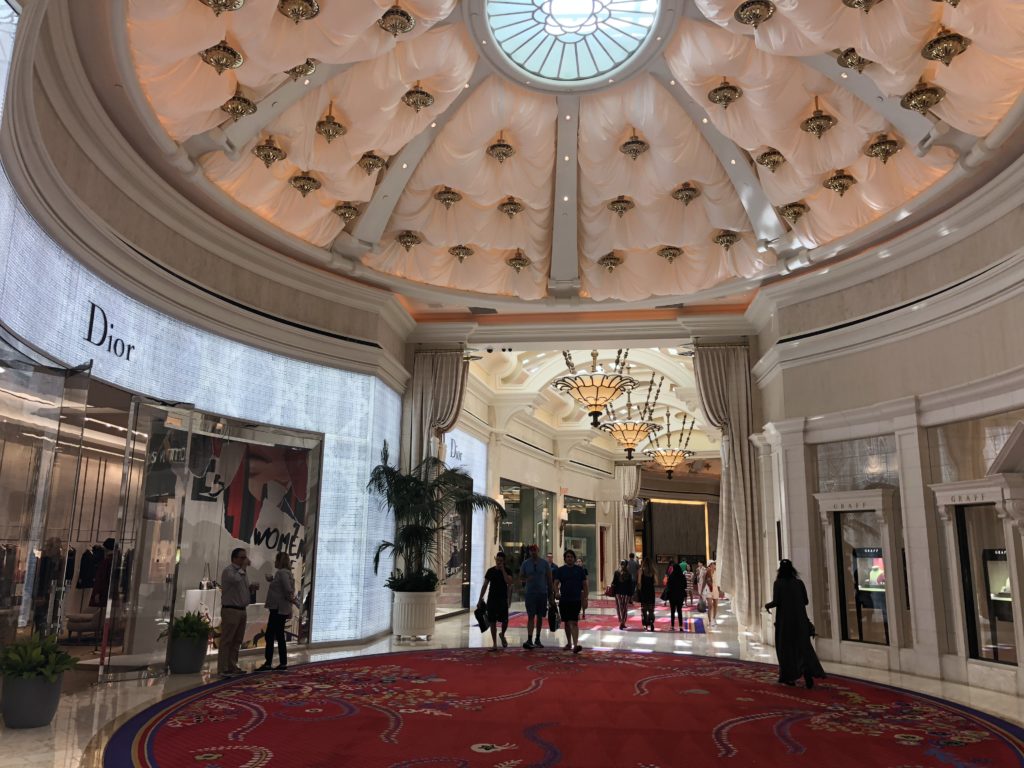
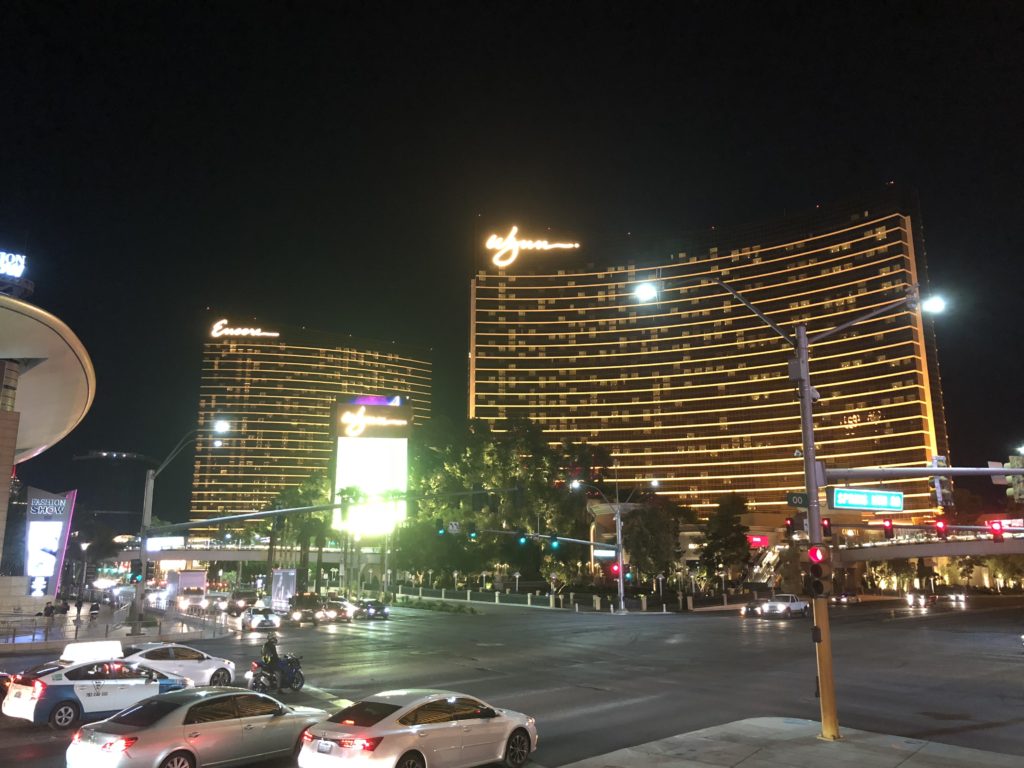
Las Vegas Sands, the last of the big four players, owns The Venetian (1999) and the adjoining The Palazzo (2007) and Sands Expo and Convention Center. Like the Wynn offerings, it’s a very impressive place – enormous, elegant, attractive. The company is actually the largest of the four, but makes most of its money from huge operations in Macau and Singapore.


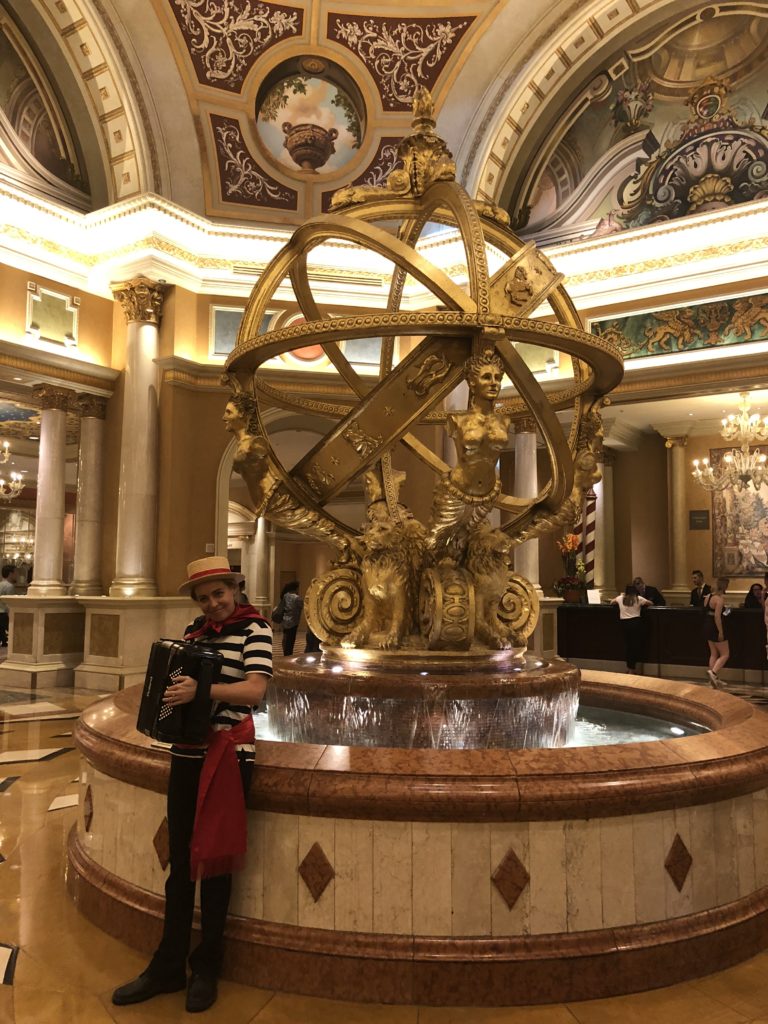
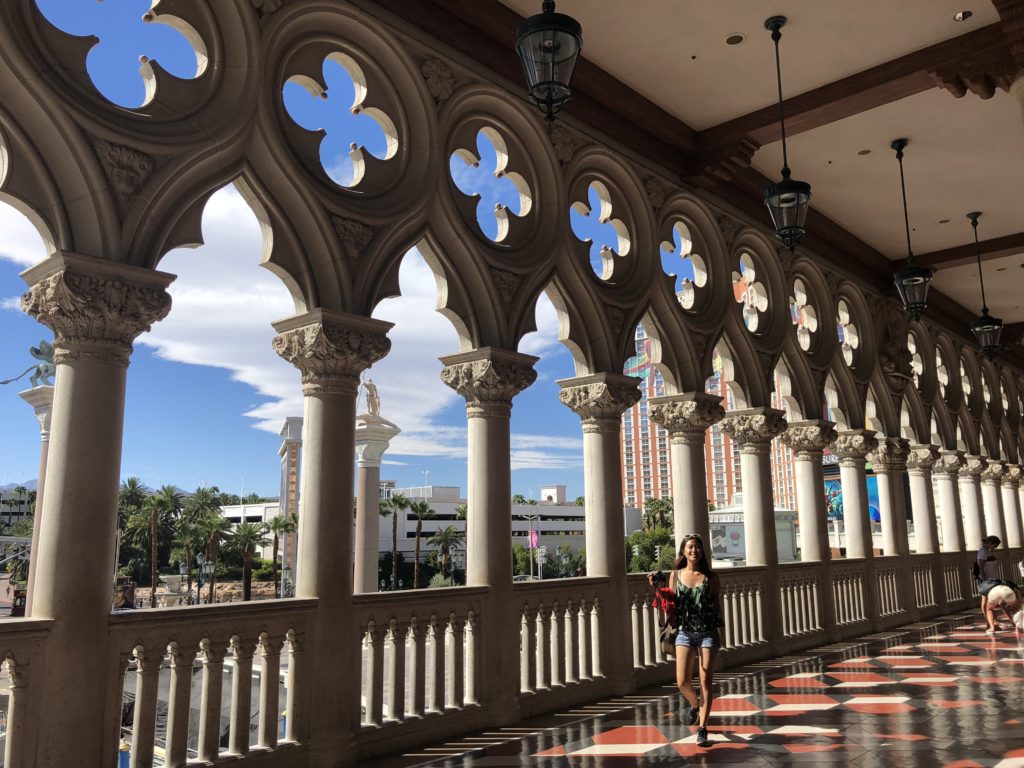
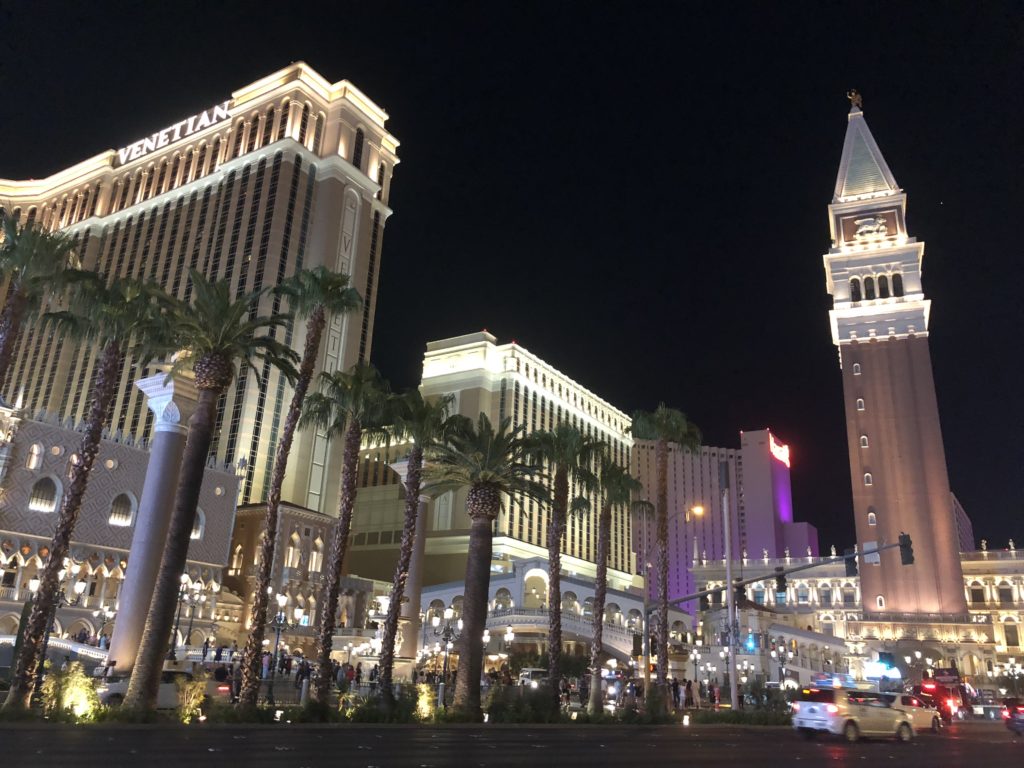
We visited the Venetian in Macau a few years back and were equally impressed. It’s a very smart way of making a resort – the extravagant unique design makes you feel like you’re enjoying a premium exclusive experience, and you hardly notice the thousands of other people enjoying their own premium “exclusive” experiences. The scale is such that around each corner you’re waiting for another amazing sight. Once you’re inside the resort, there seems little incentive to leave. And underpinning this all, the steady stream of casino-generated cash flow. It’s a model that has worked well in Singapore, Macau, and Australia, and Japan seems next. Las Vegas Sands, unlike perhaps any other, has perfected this model.
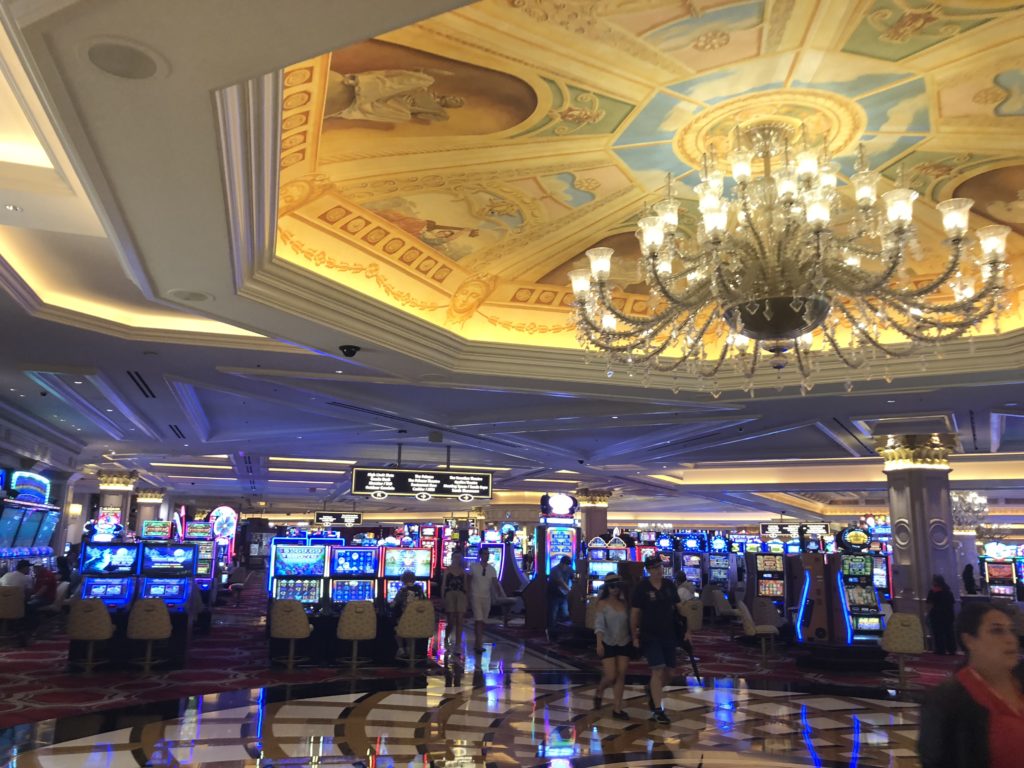
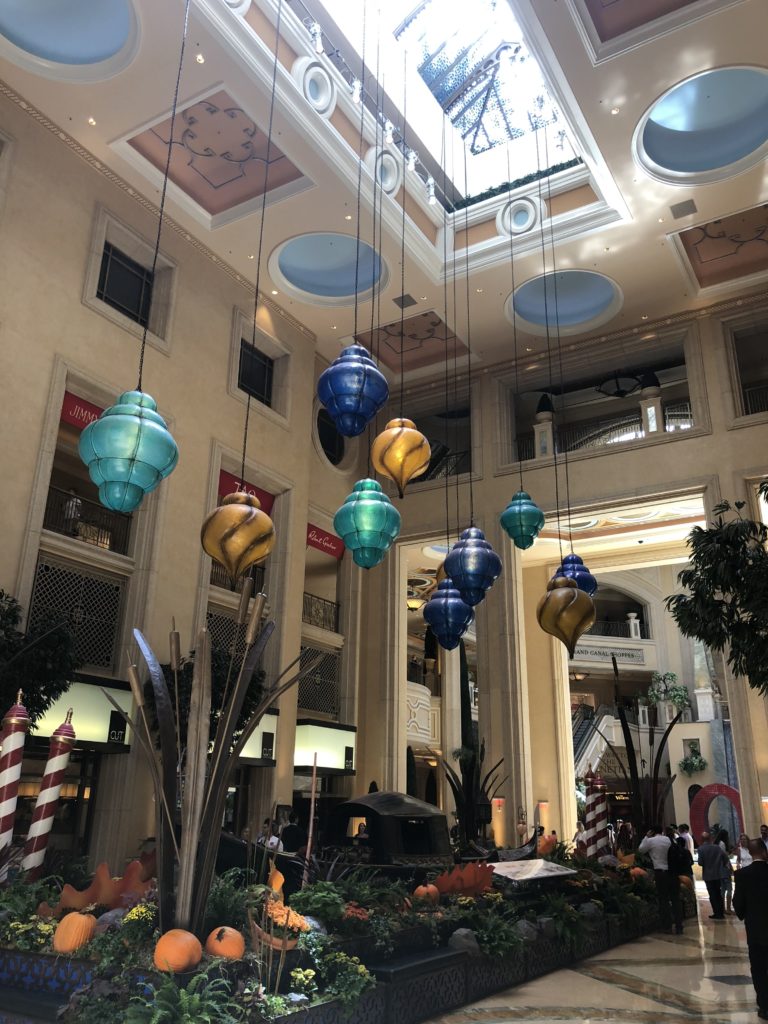

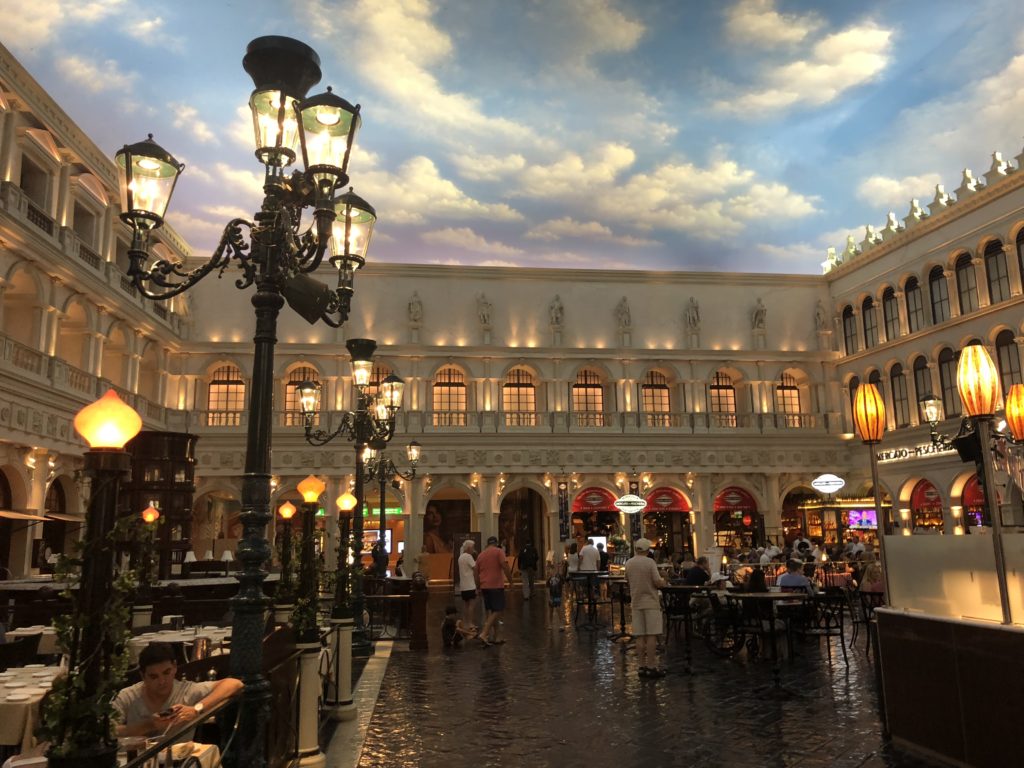
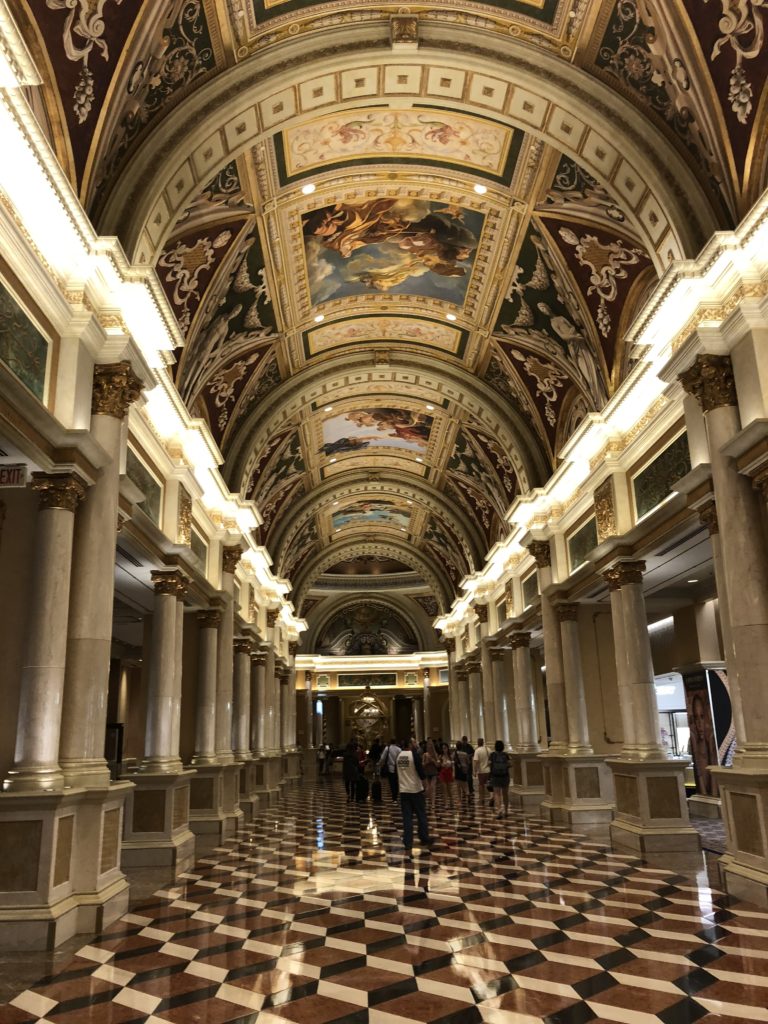
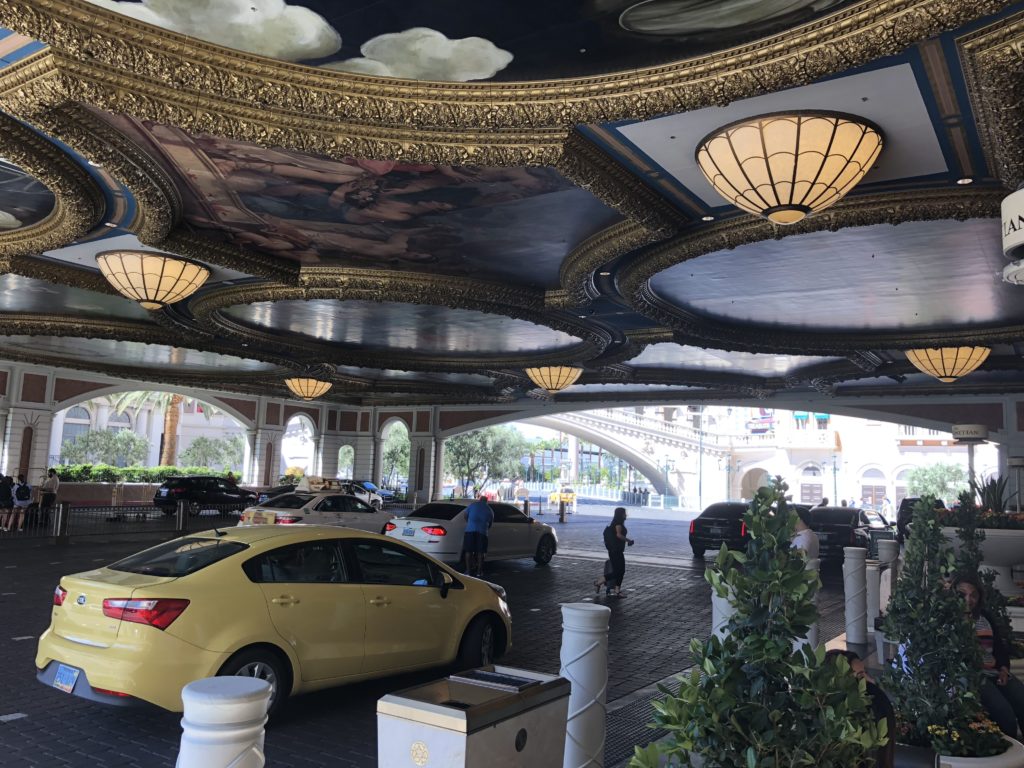
Las Vegas is a fascinating place, and I’m pretty sure there is no other place quite like it. Something for everyone. Perhaps because of this, its a place where you can spend money far faster than you think. Maybe all the glitz and excitement makes people believe they are wealthier, temporarily of course. It’s a hectic place and there is much more to see, but after a busy few days of sensory bombardment we were quite happy to pack up, hop in the car, and continue our journey eastward. We stopped briefly at Hoover Dam for a look, before continuing on into the state of Arizona and towards the Grand Canyon…
A few more Vegas photos:
